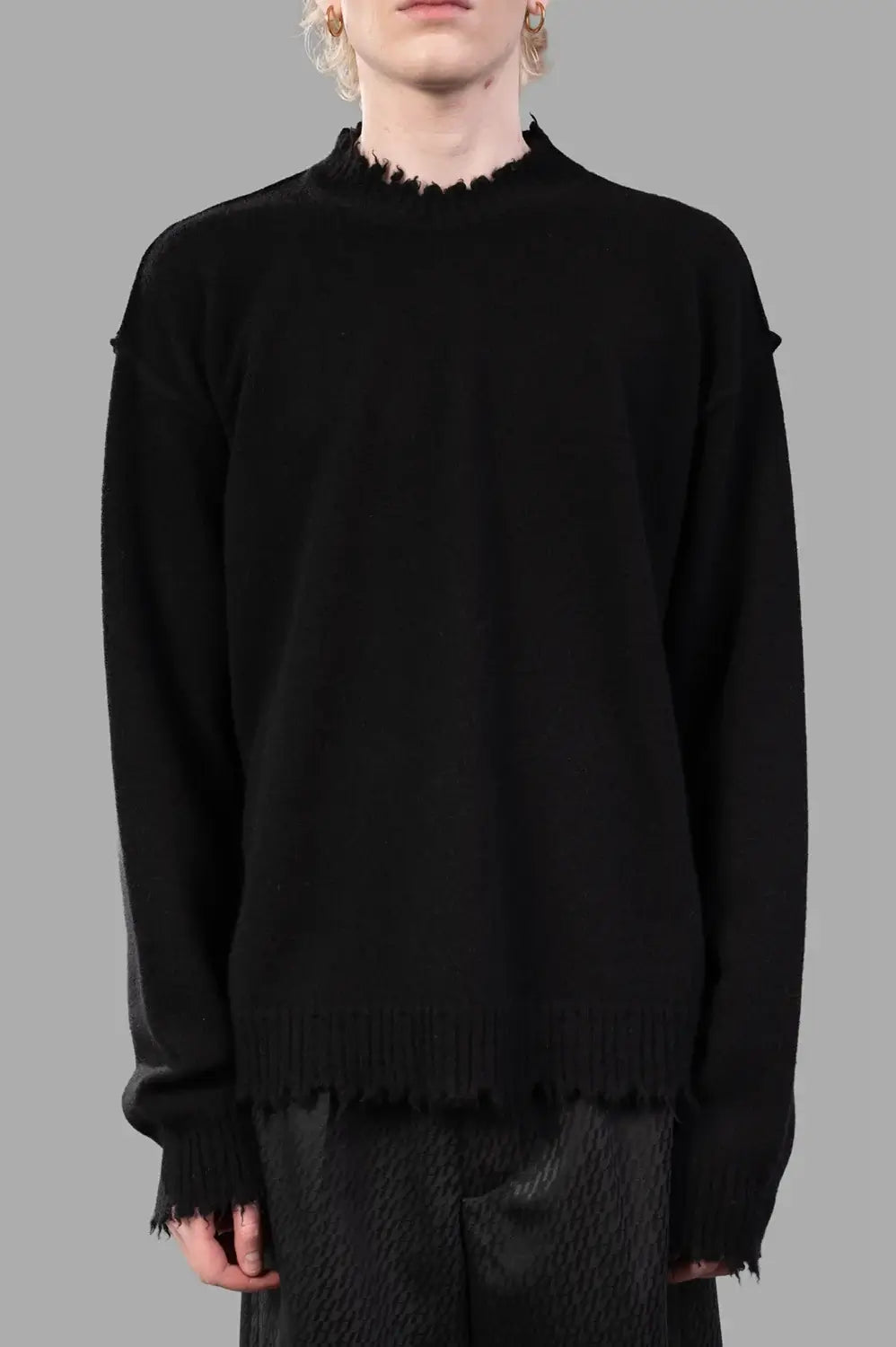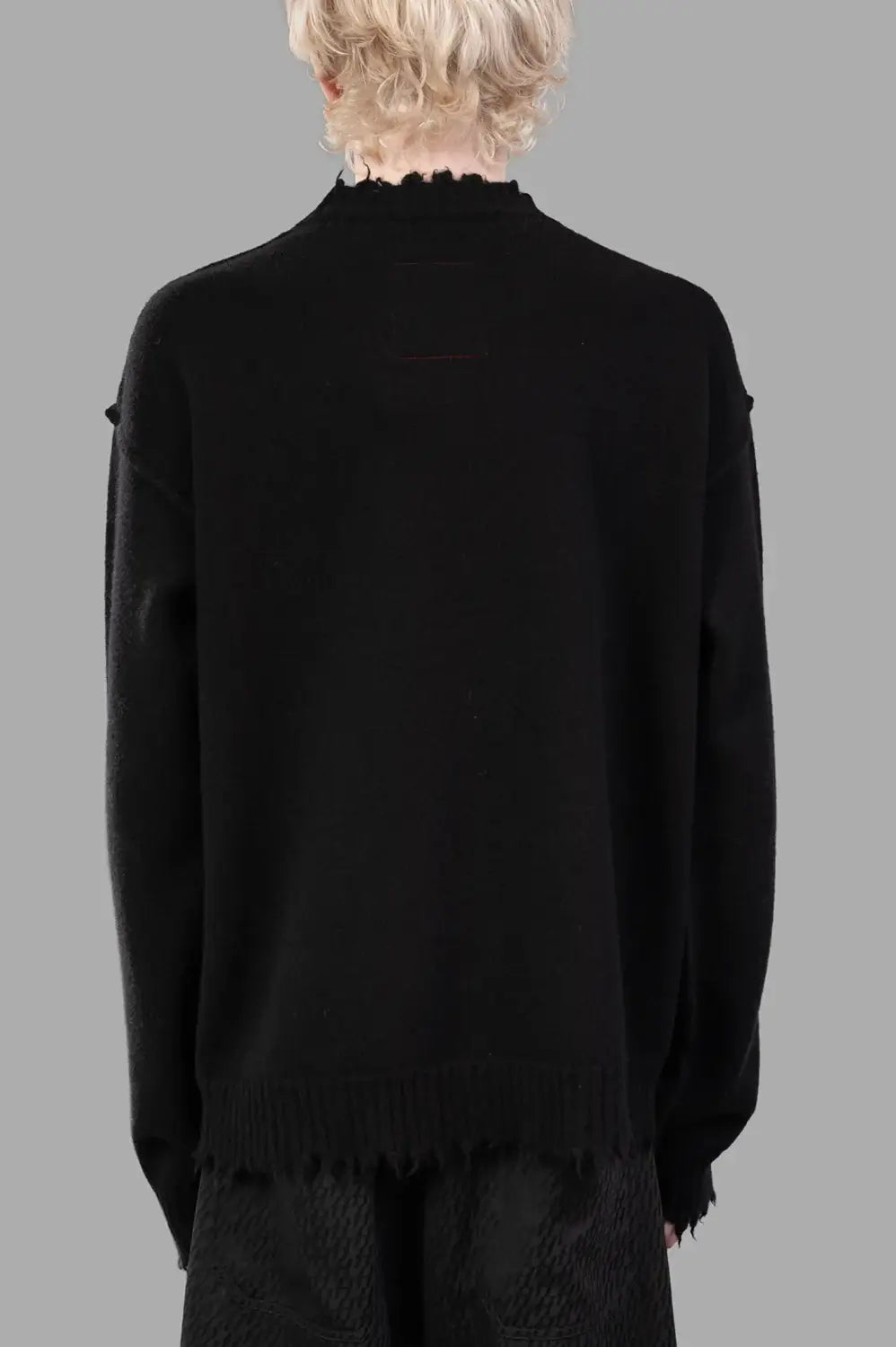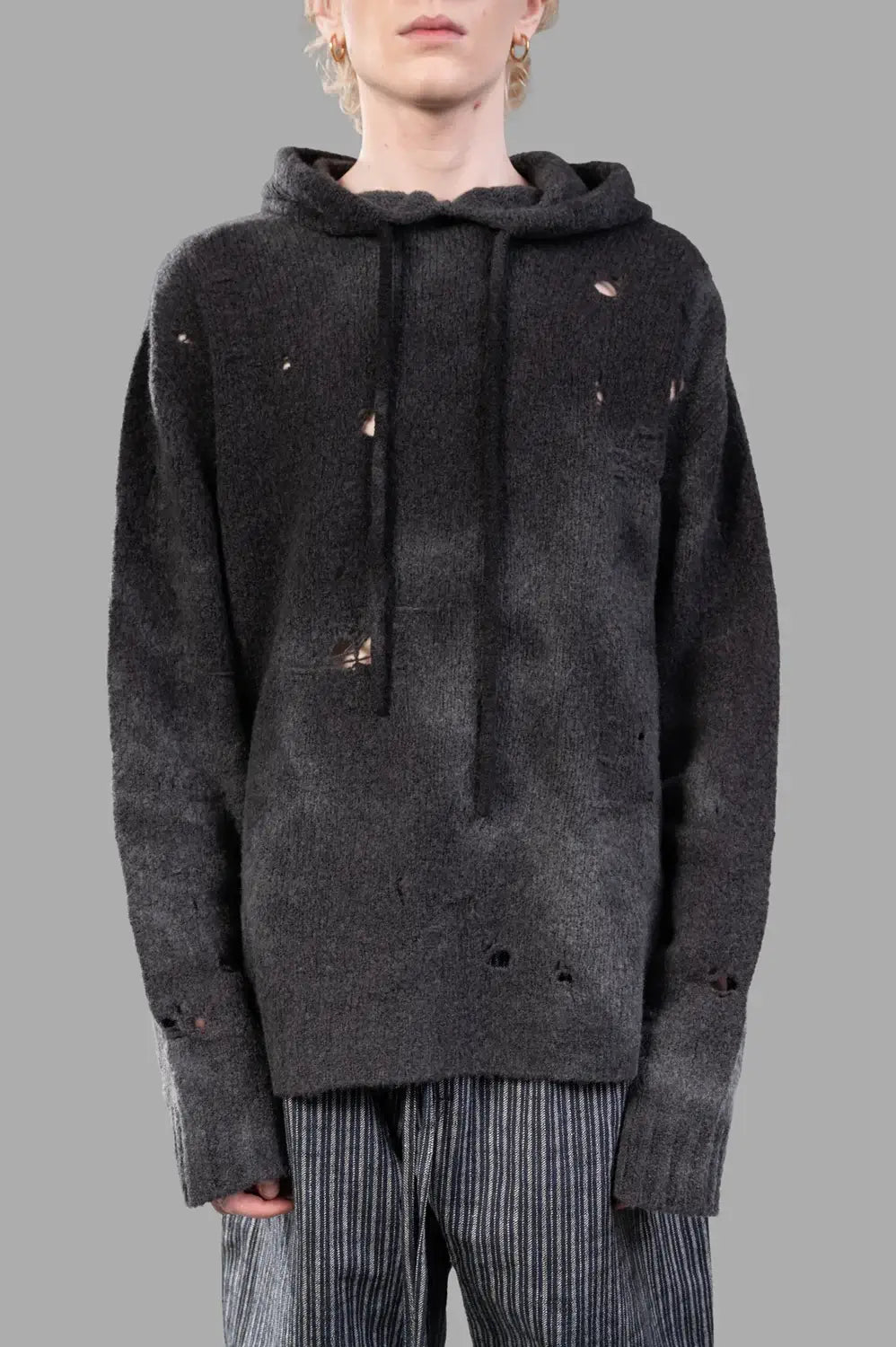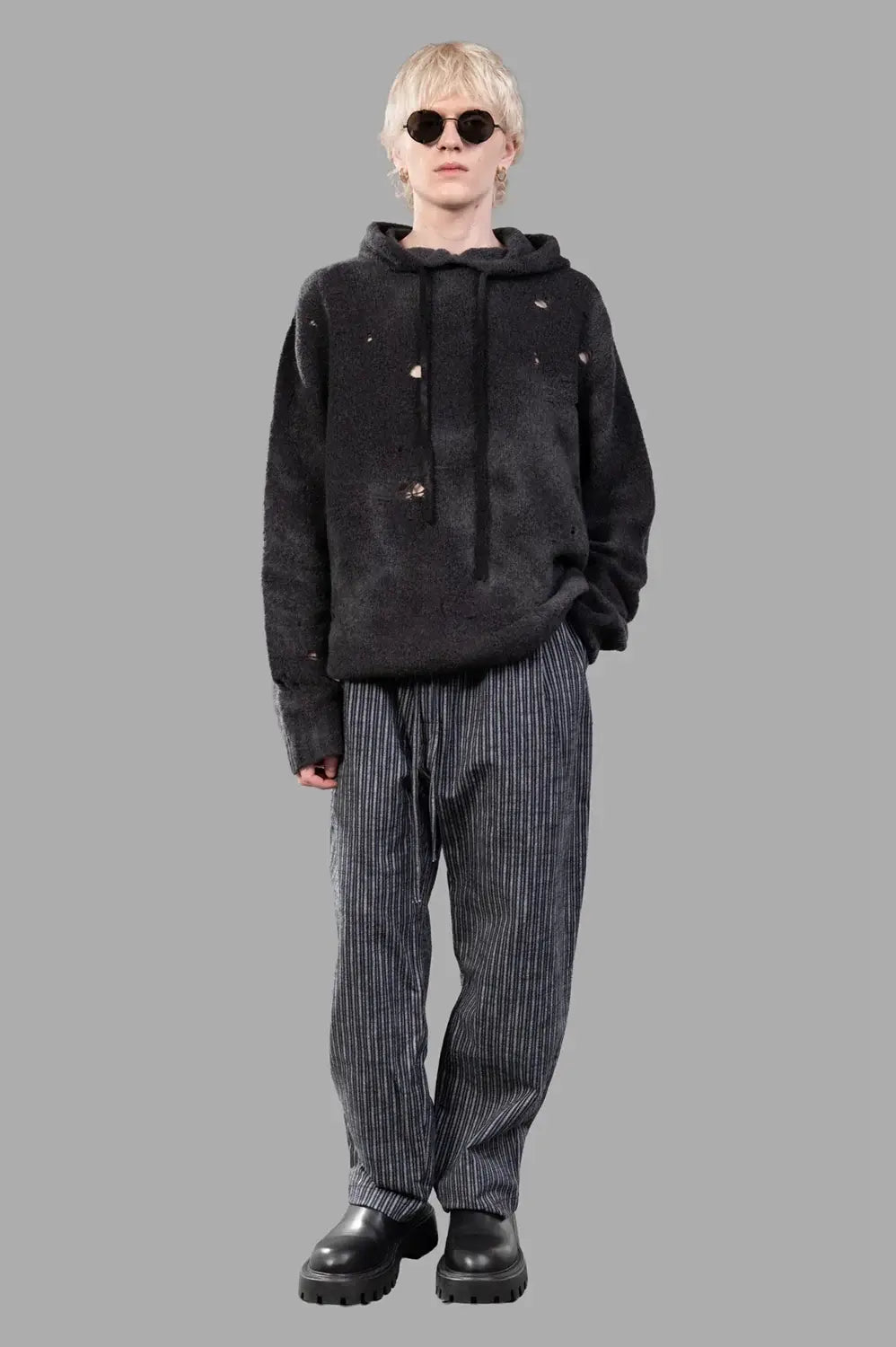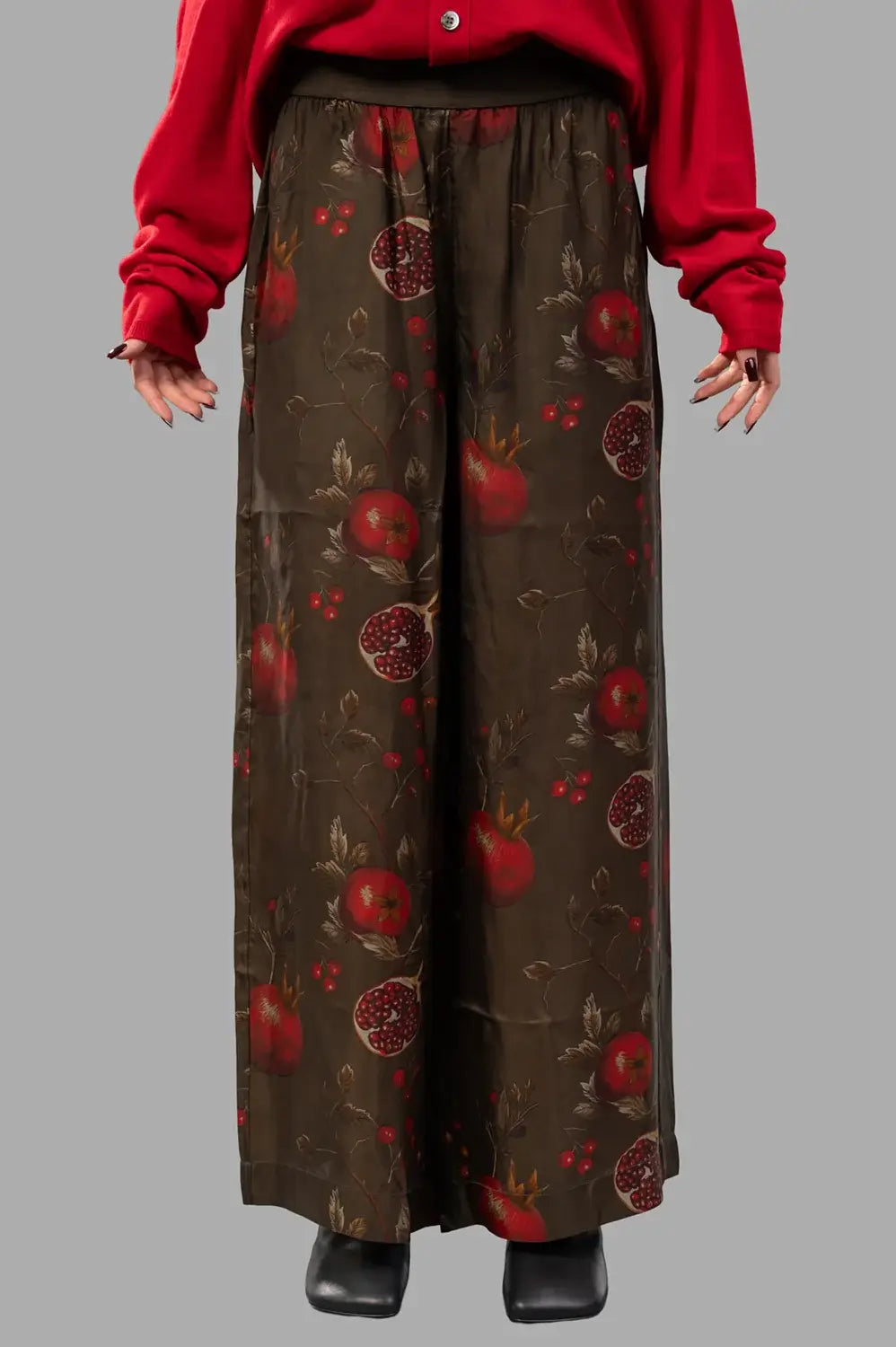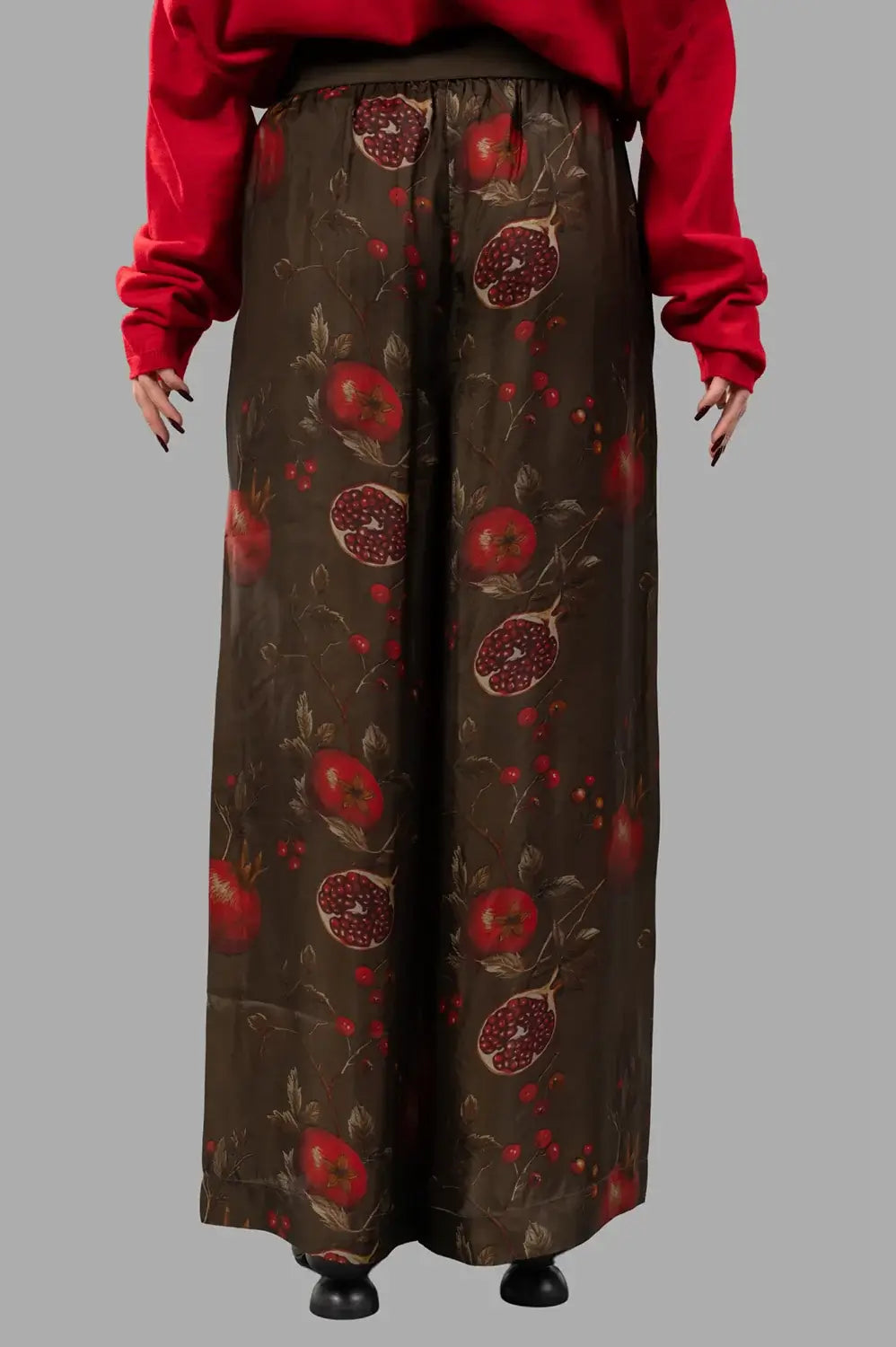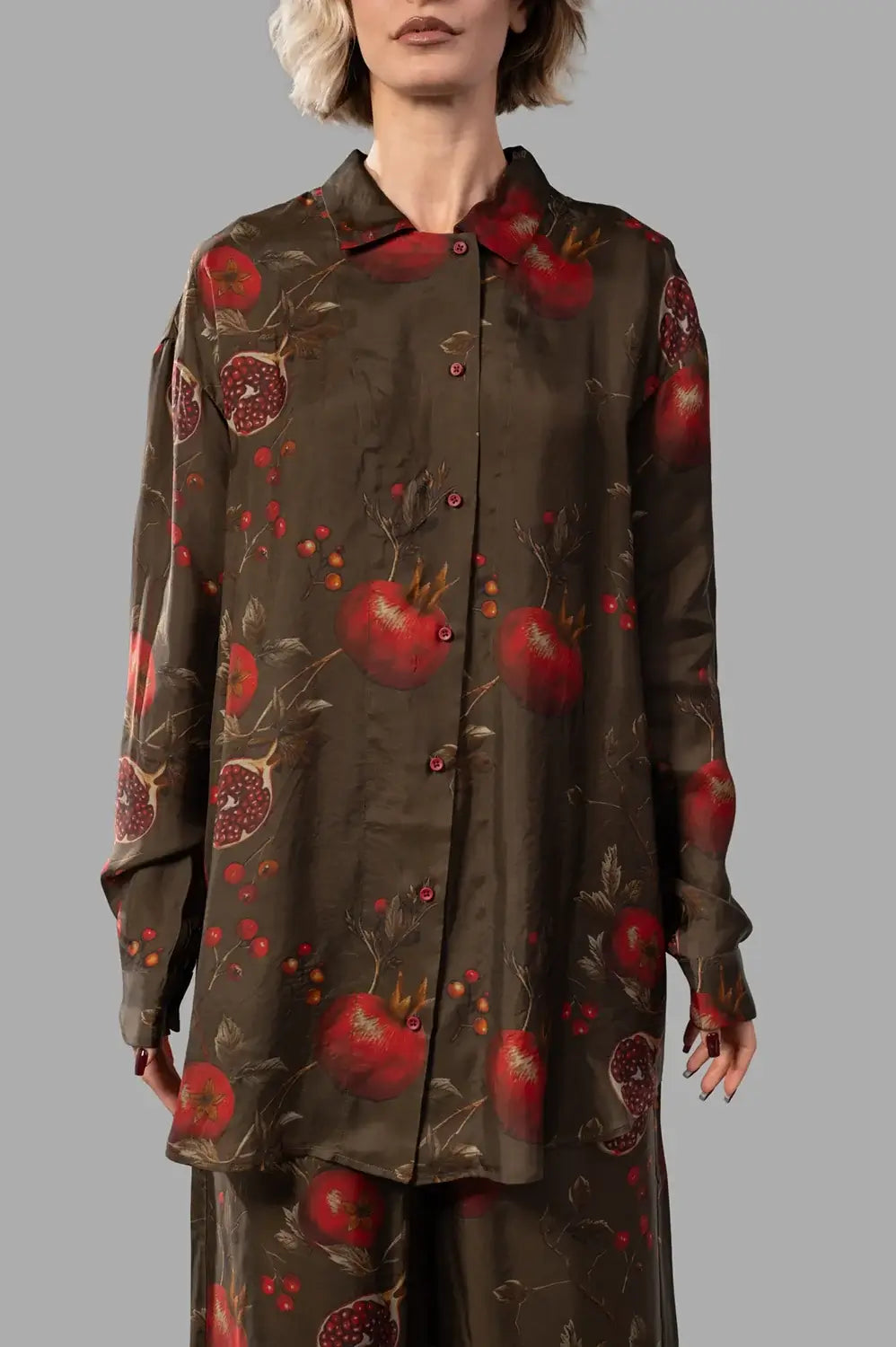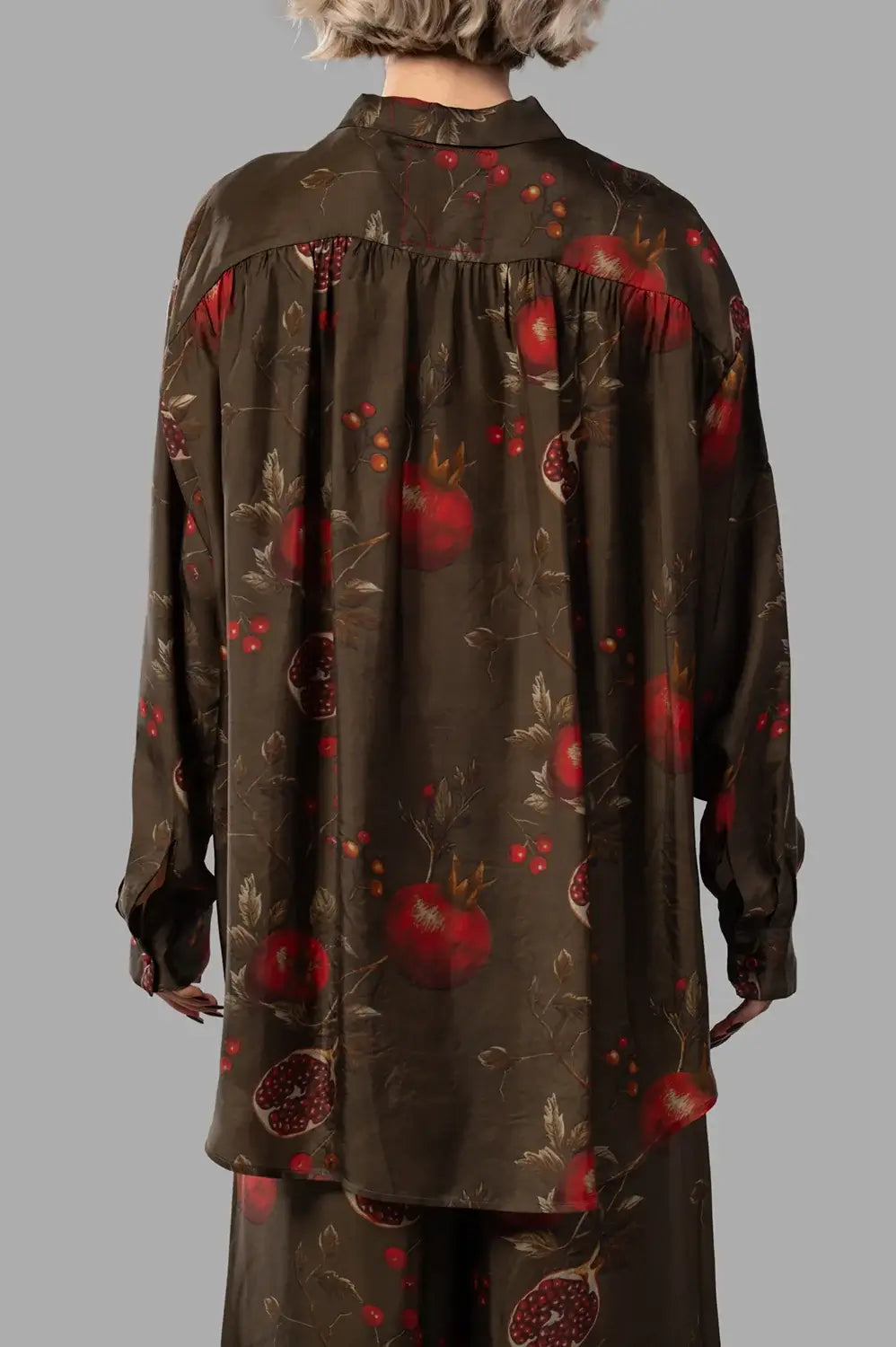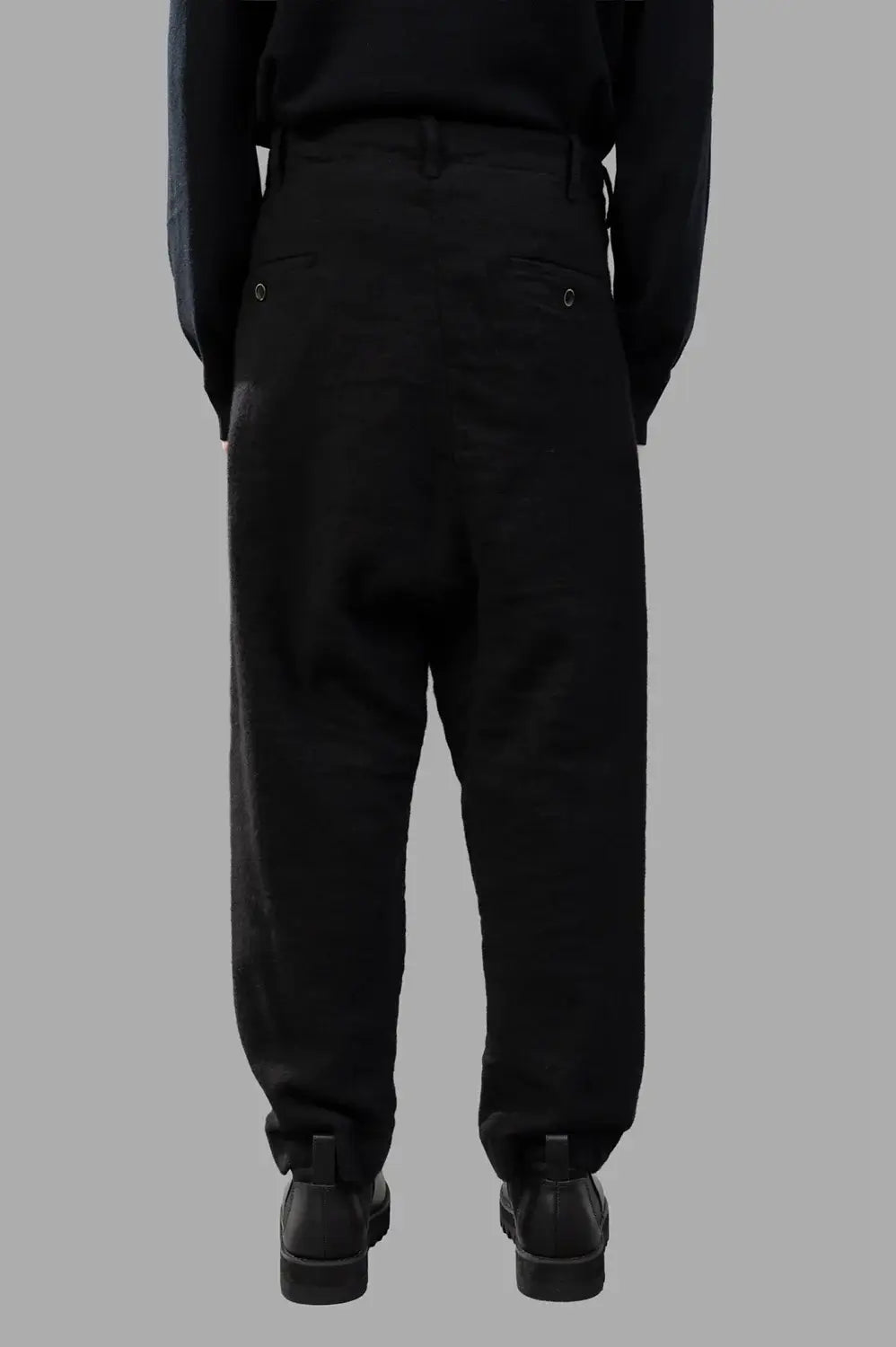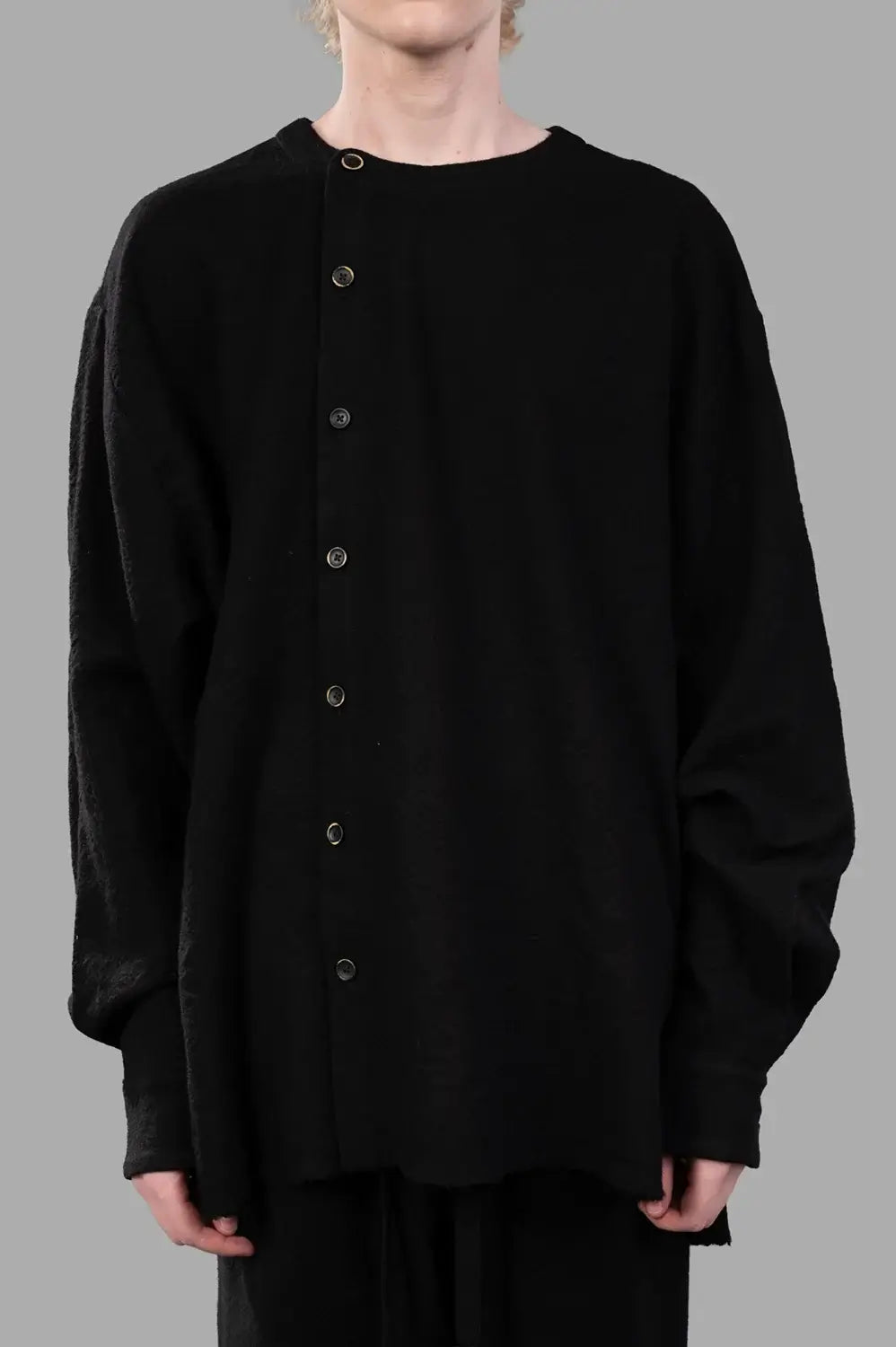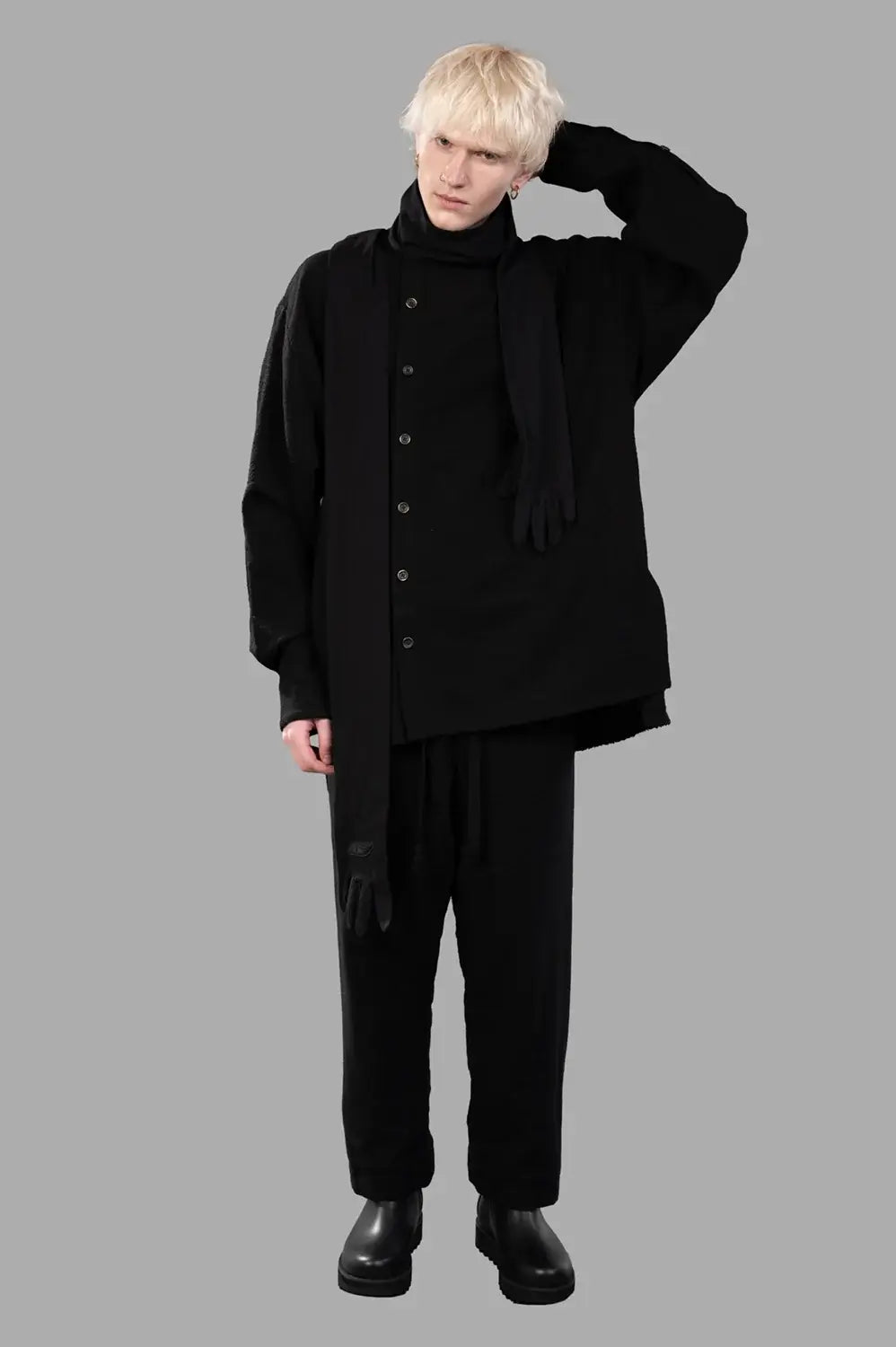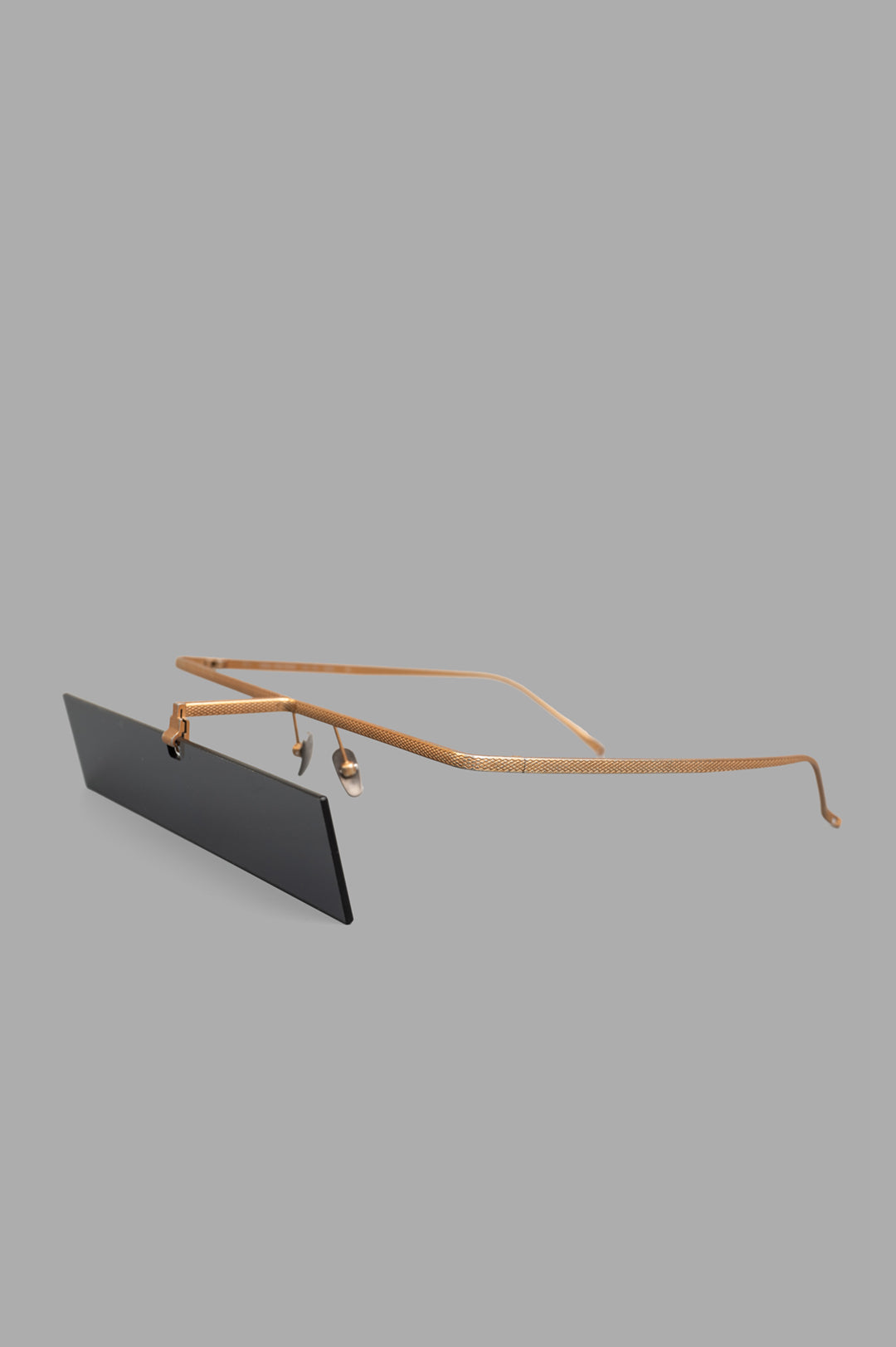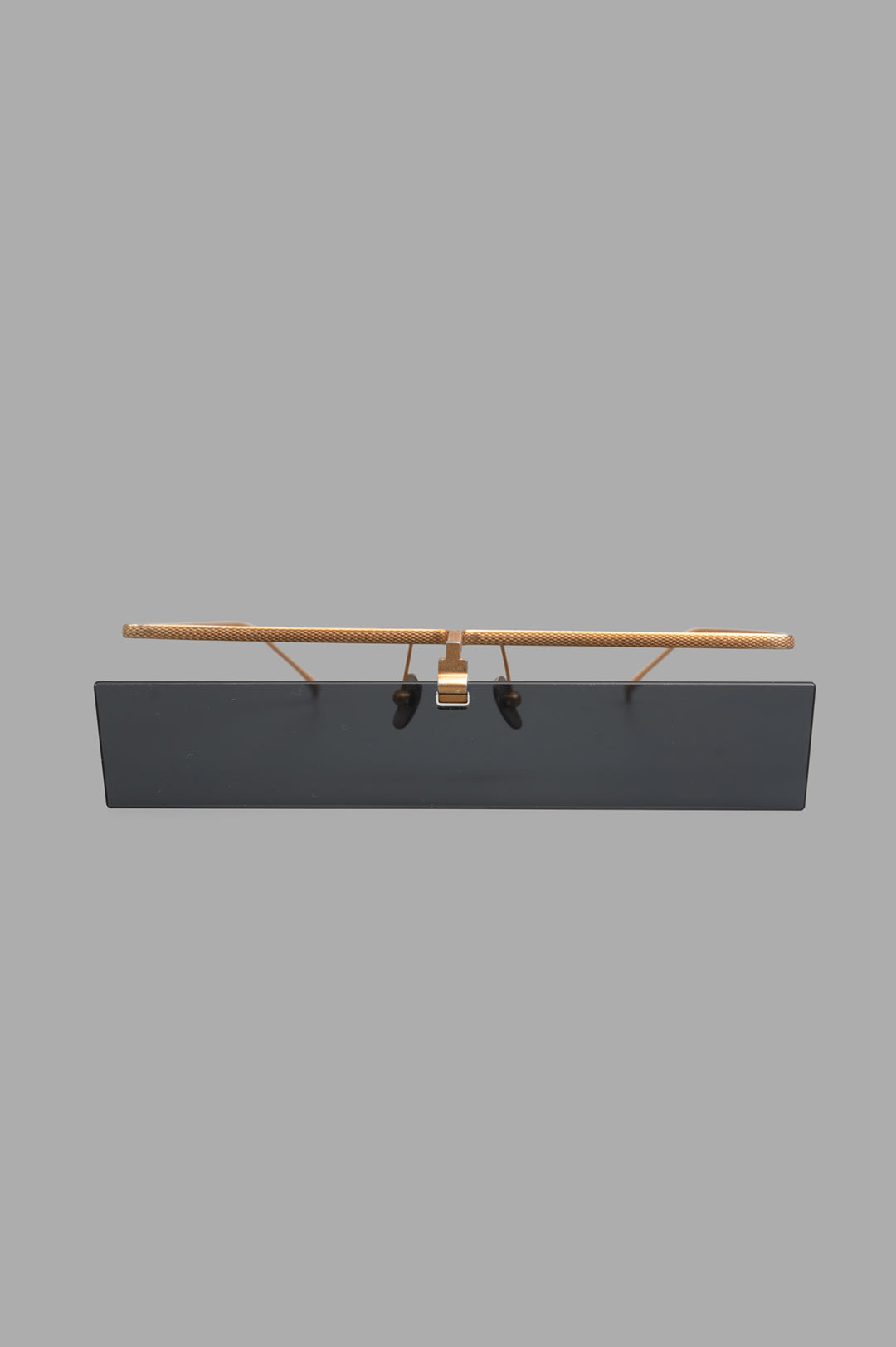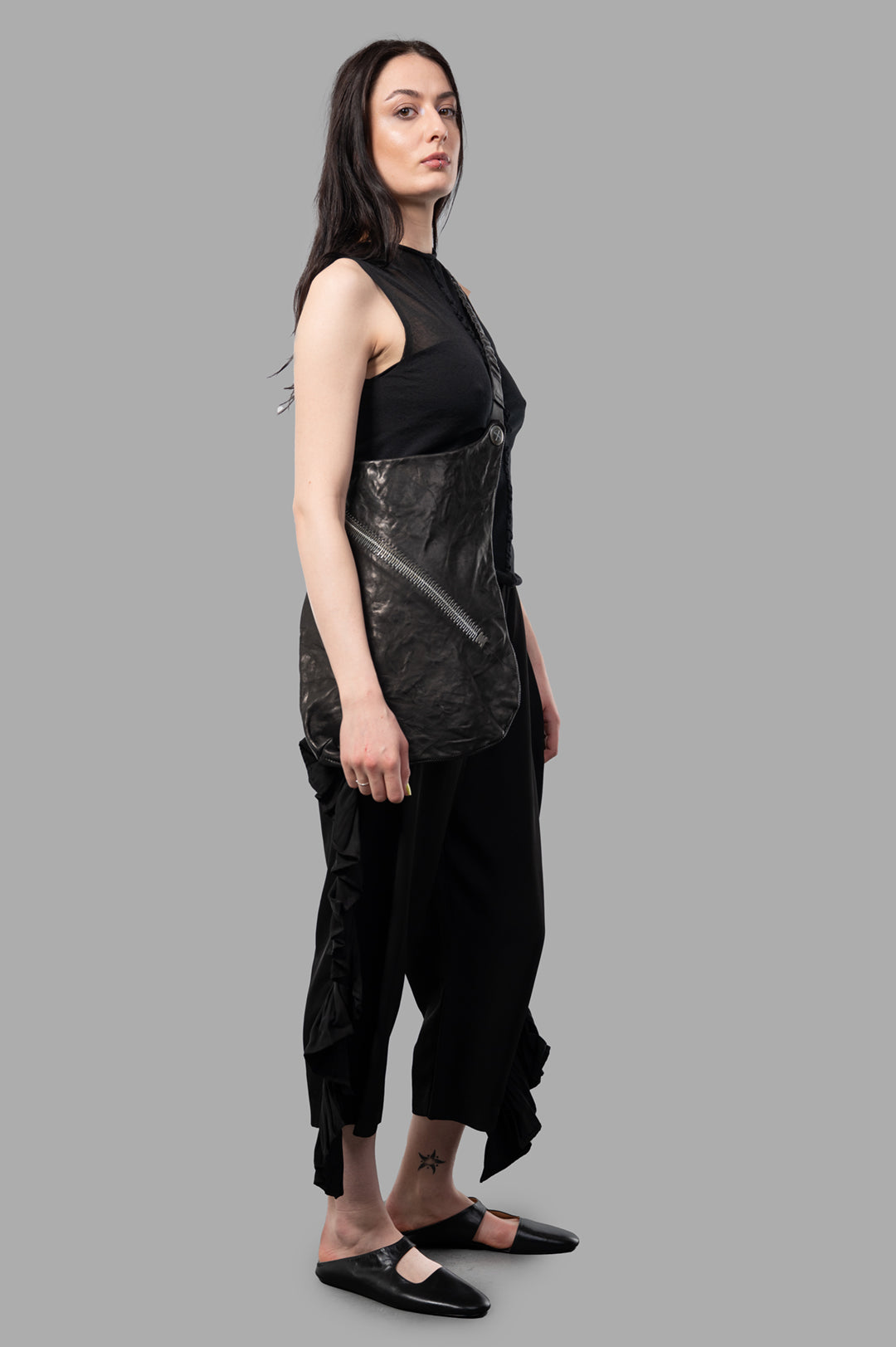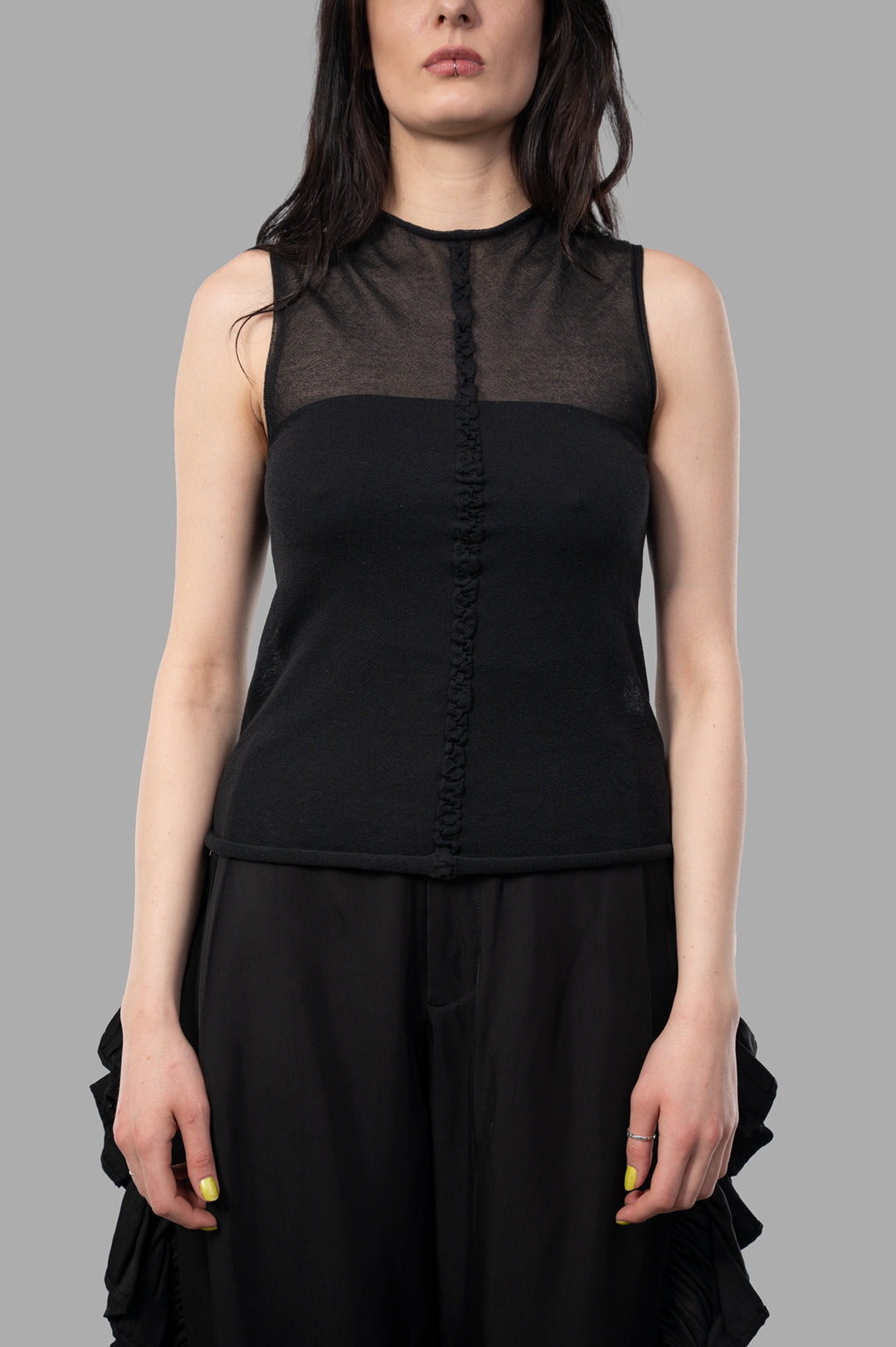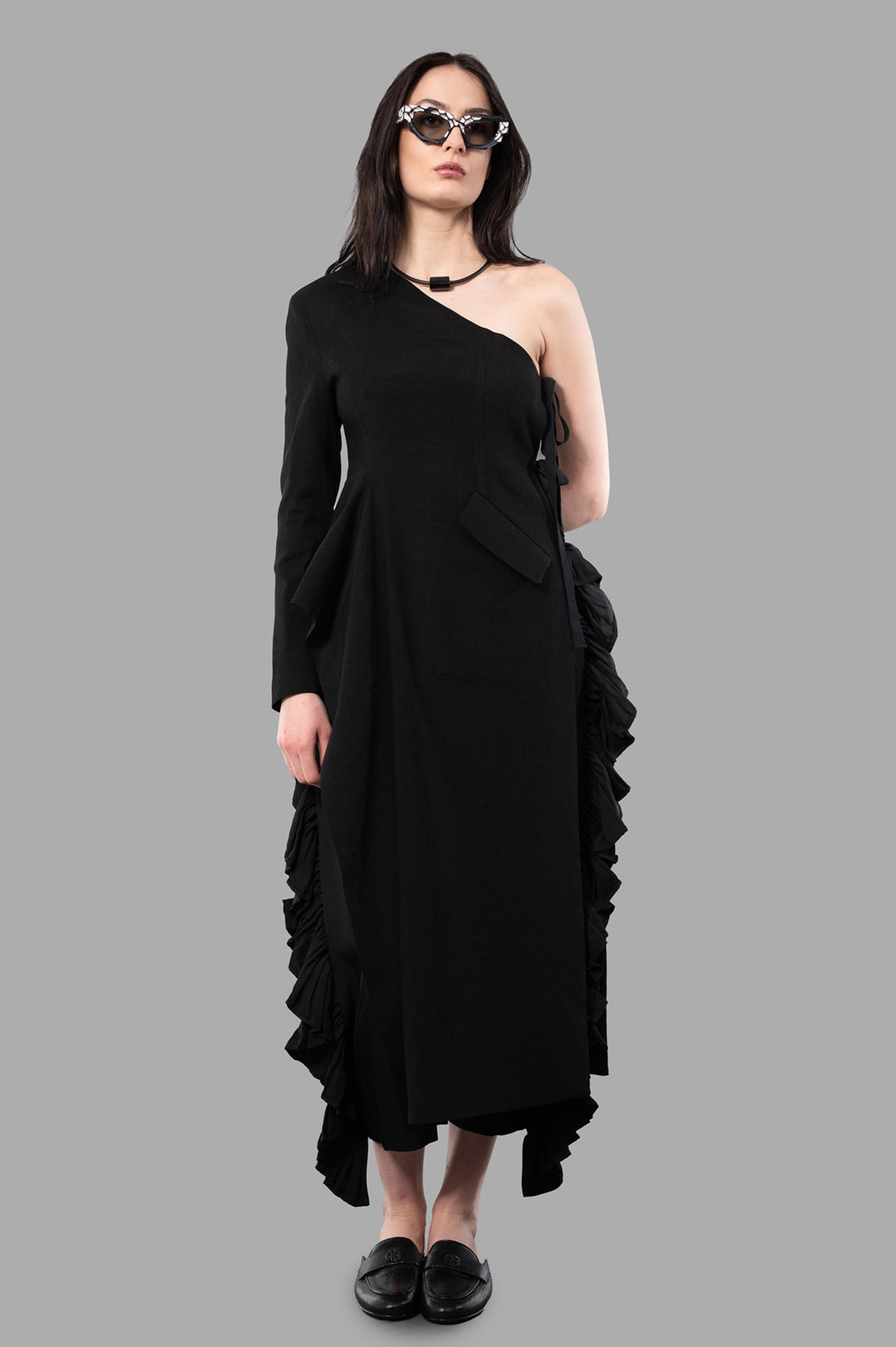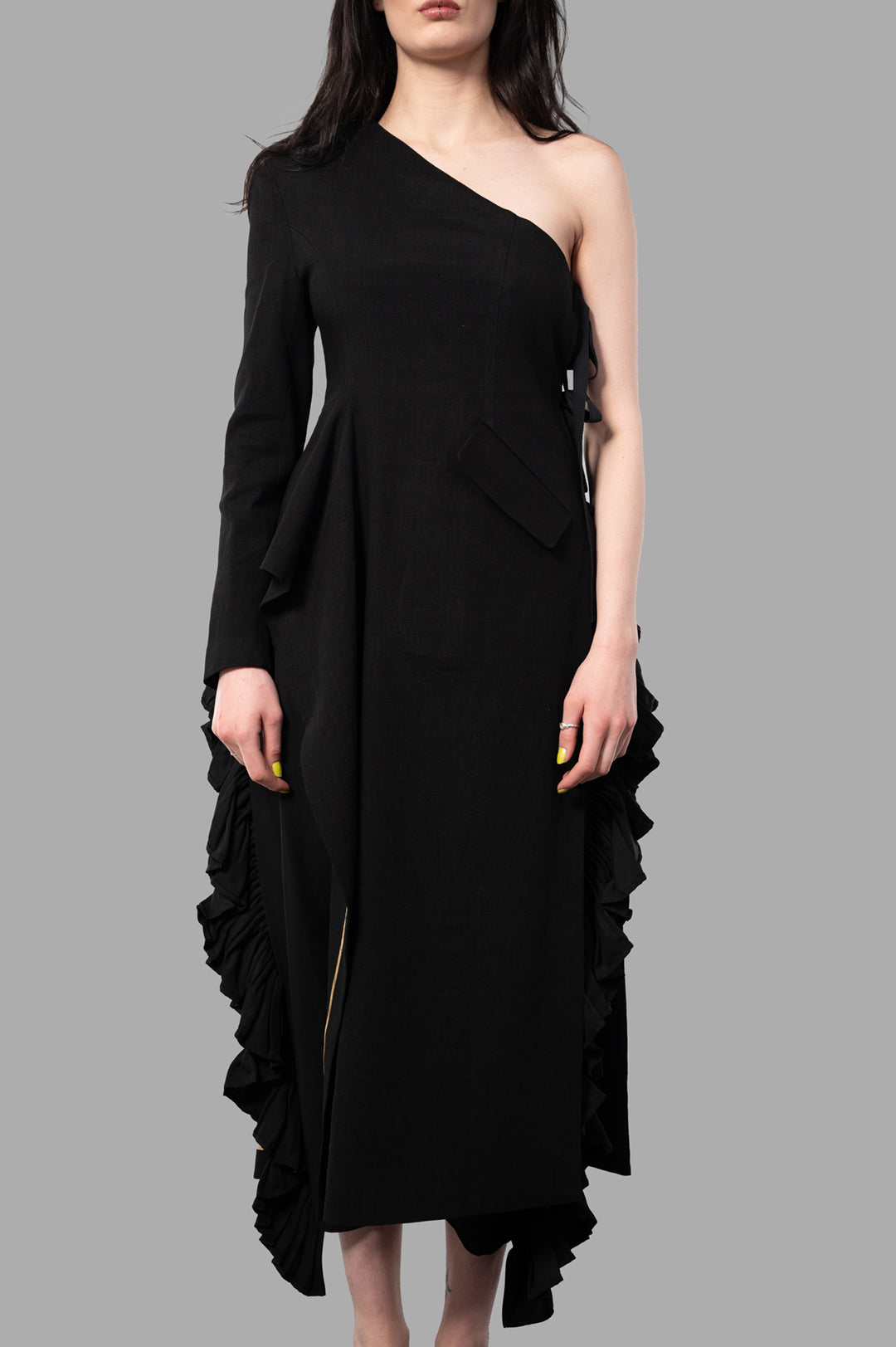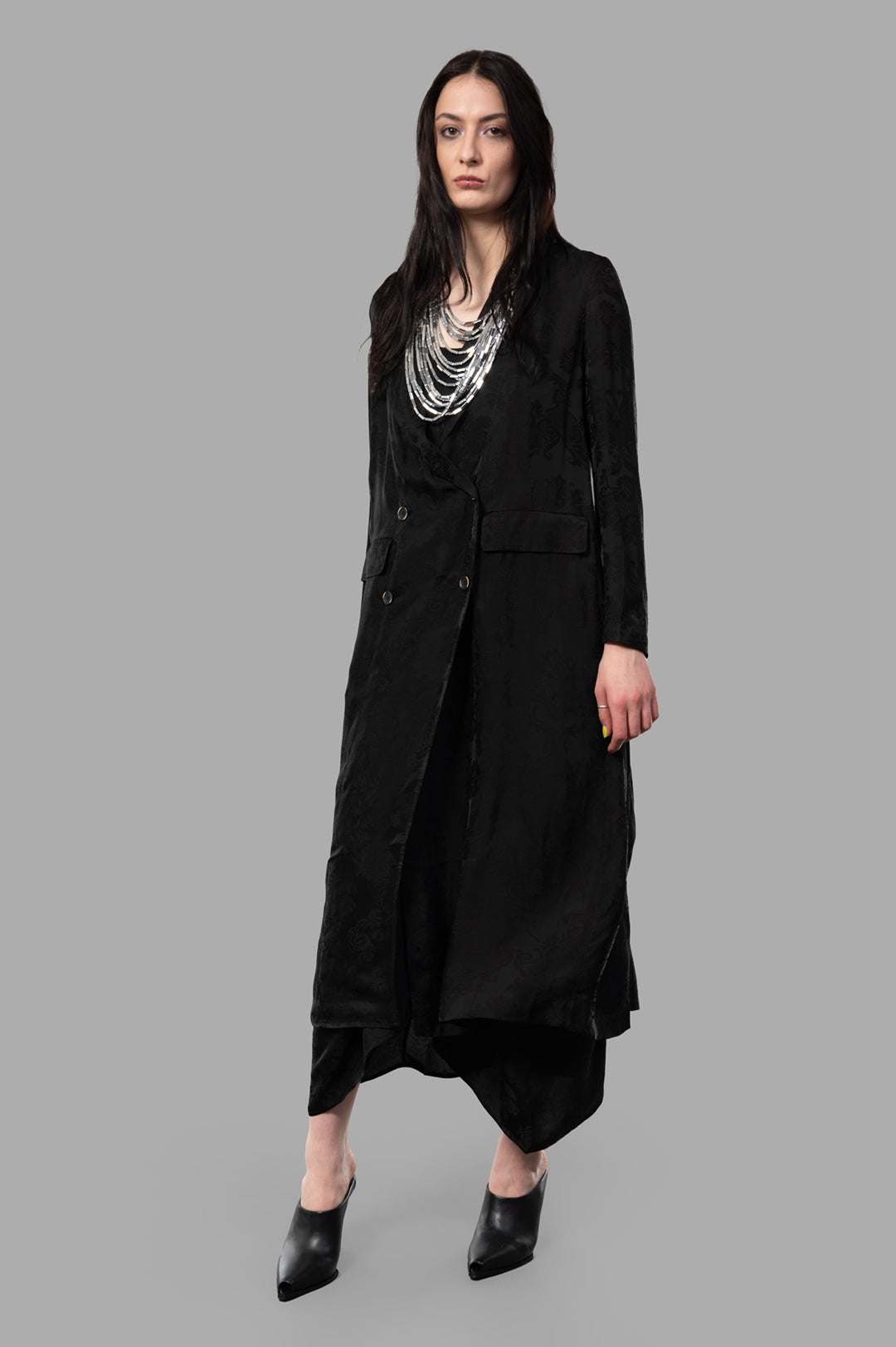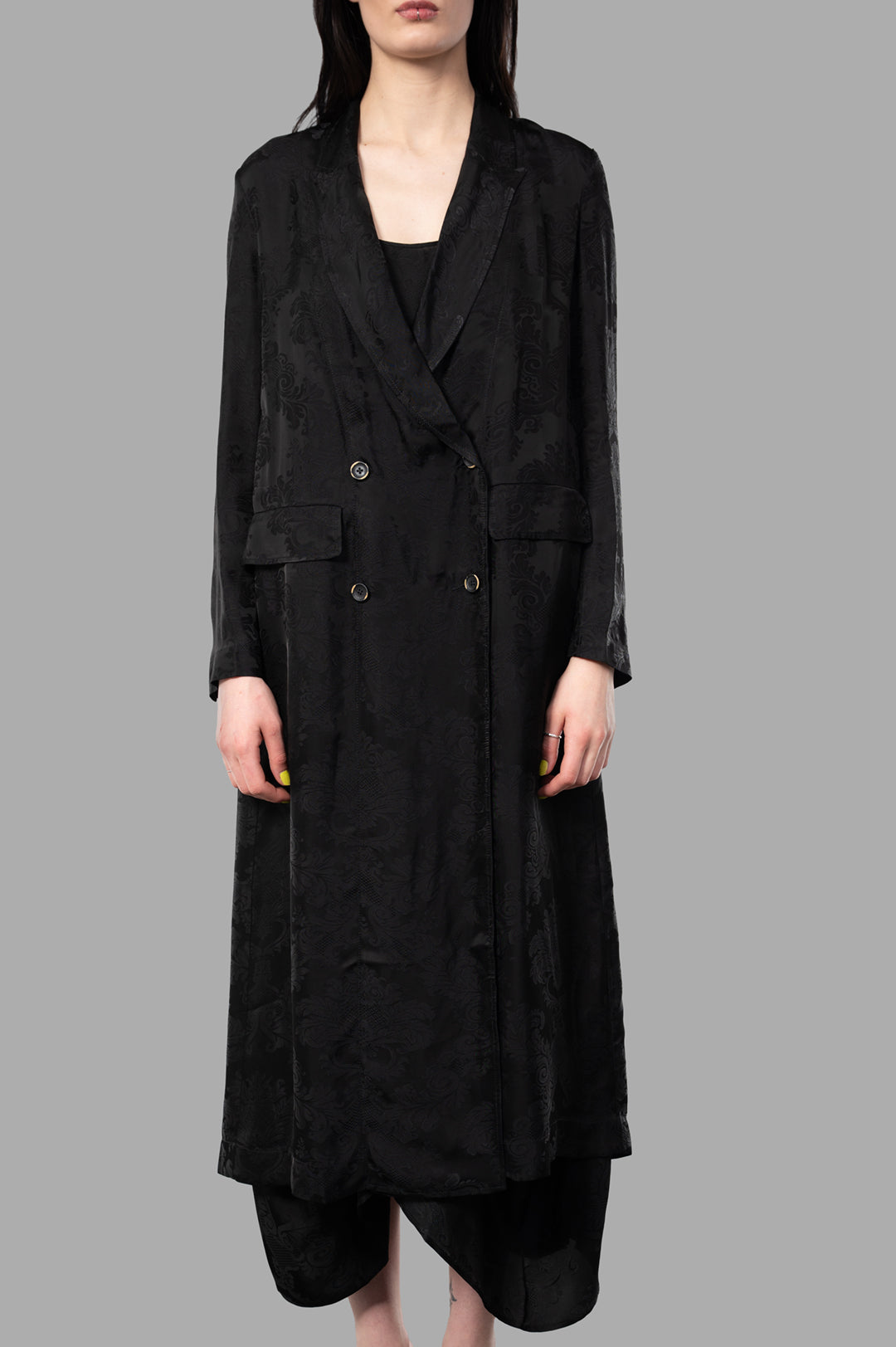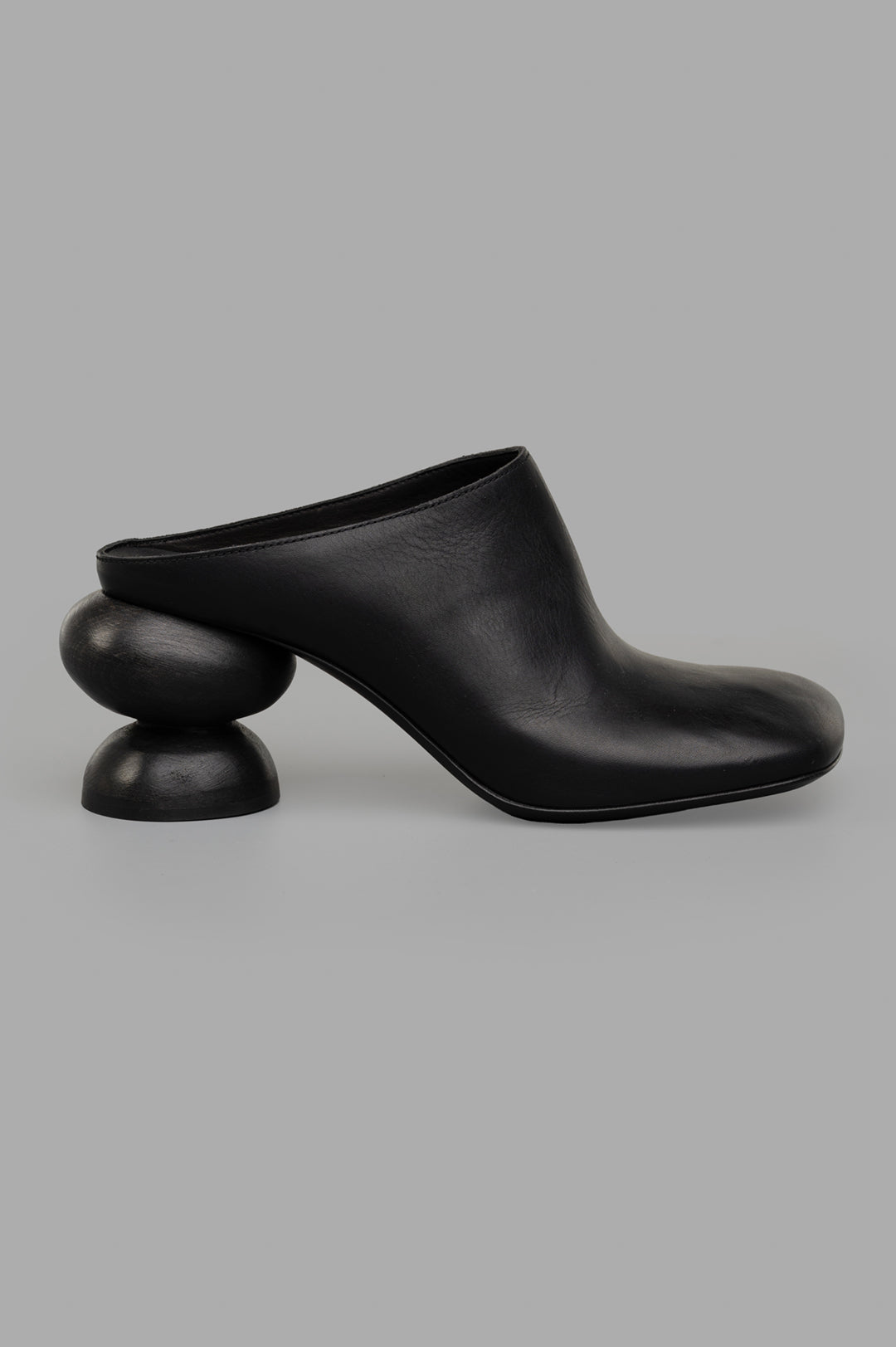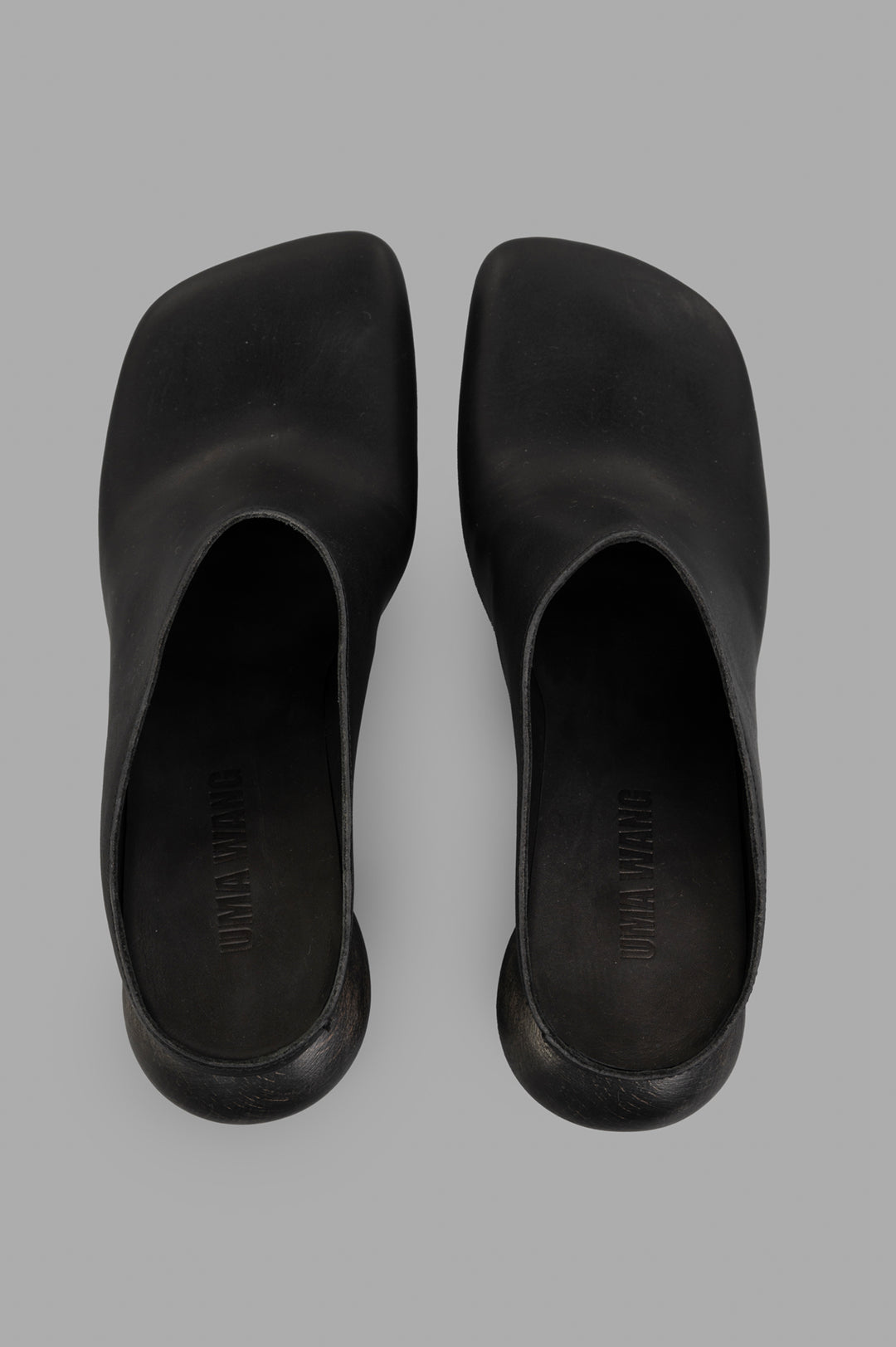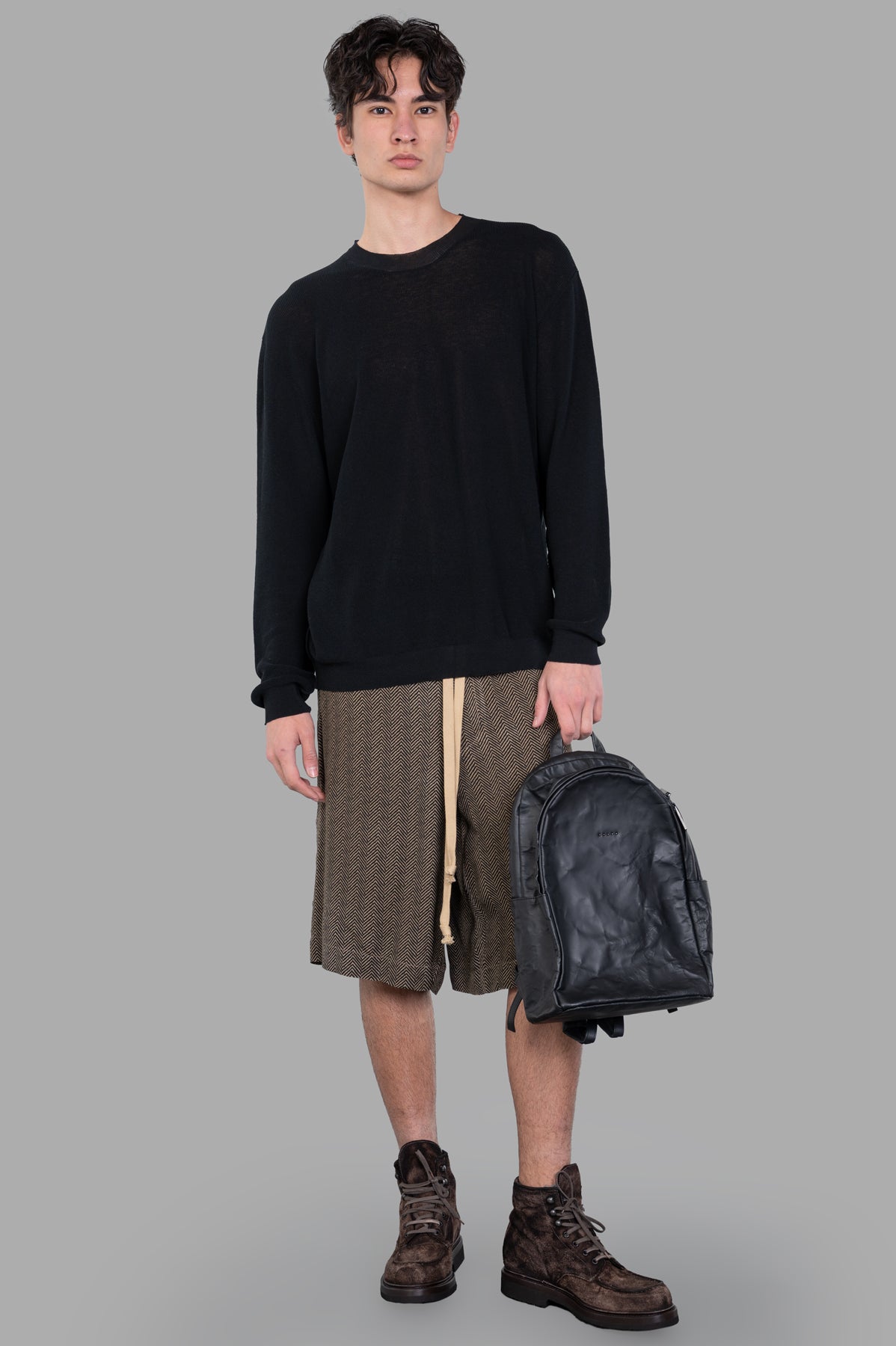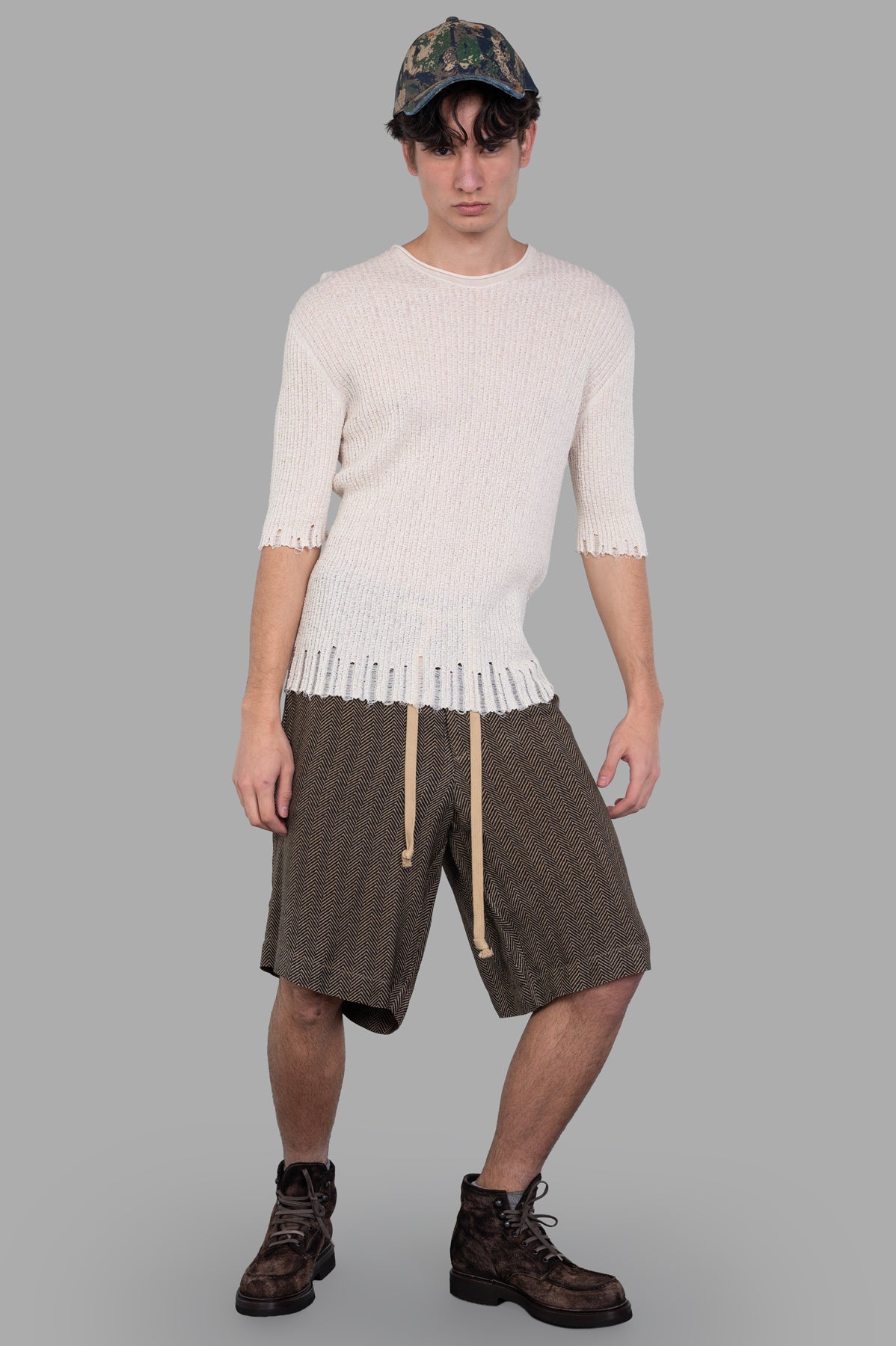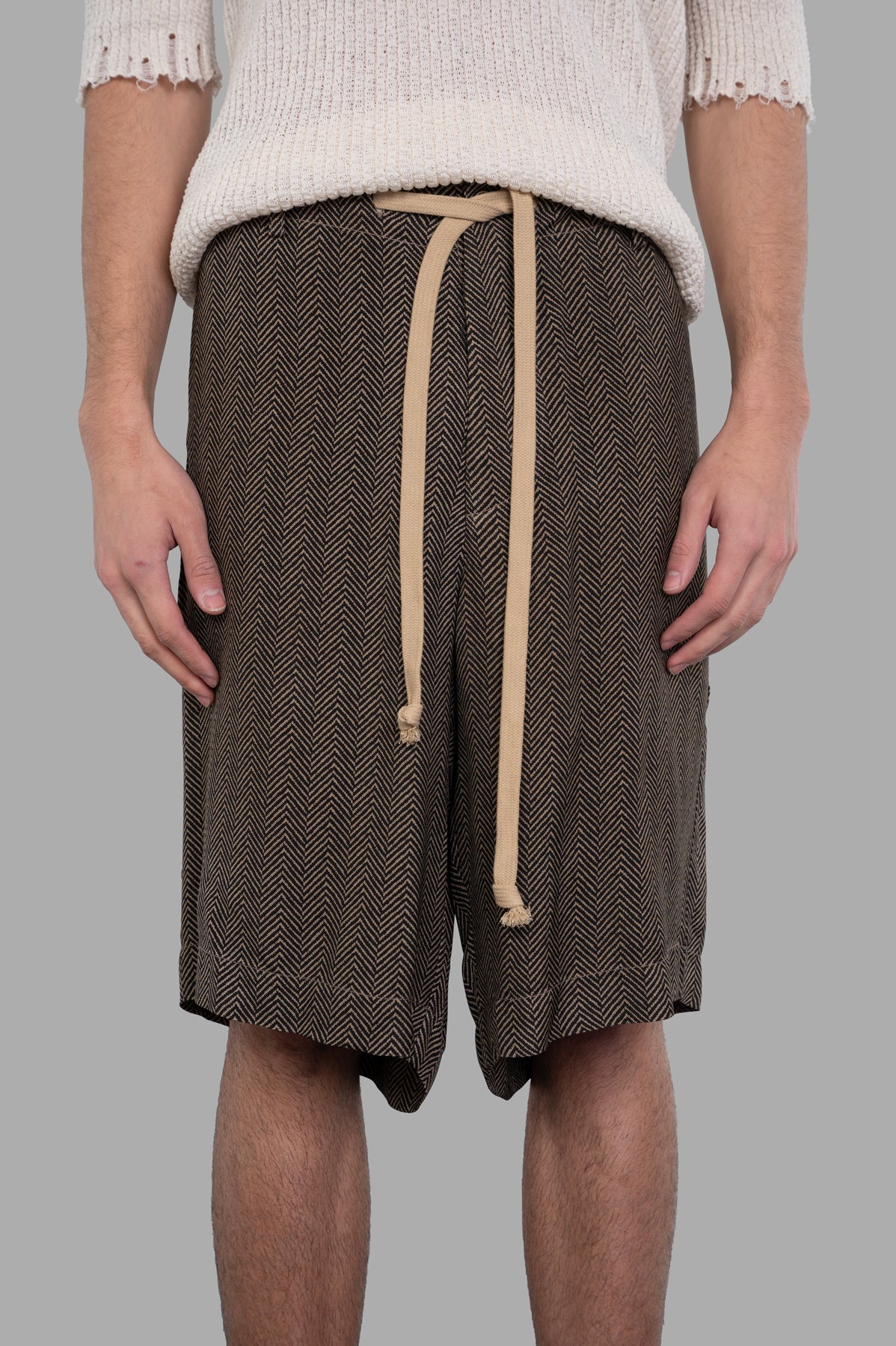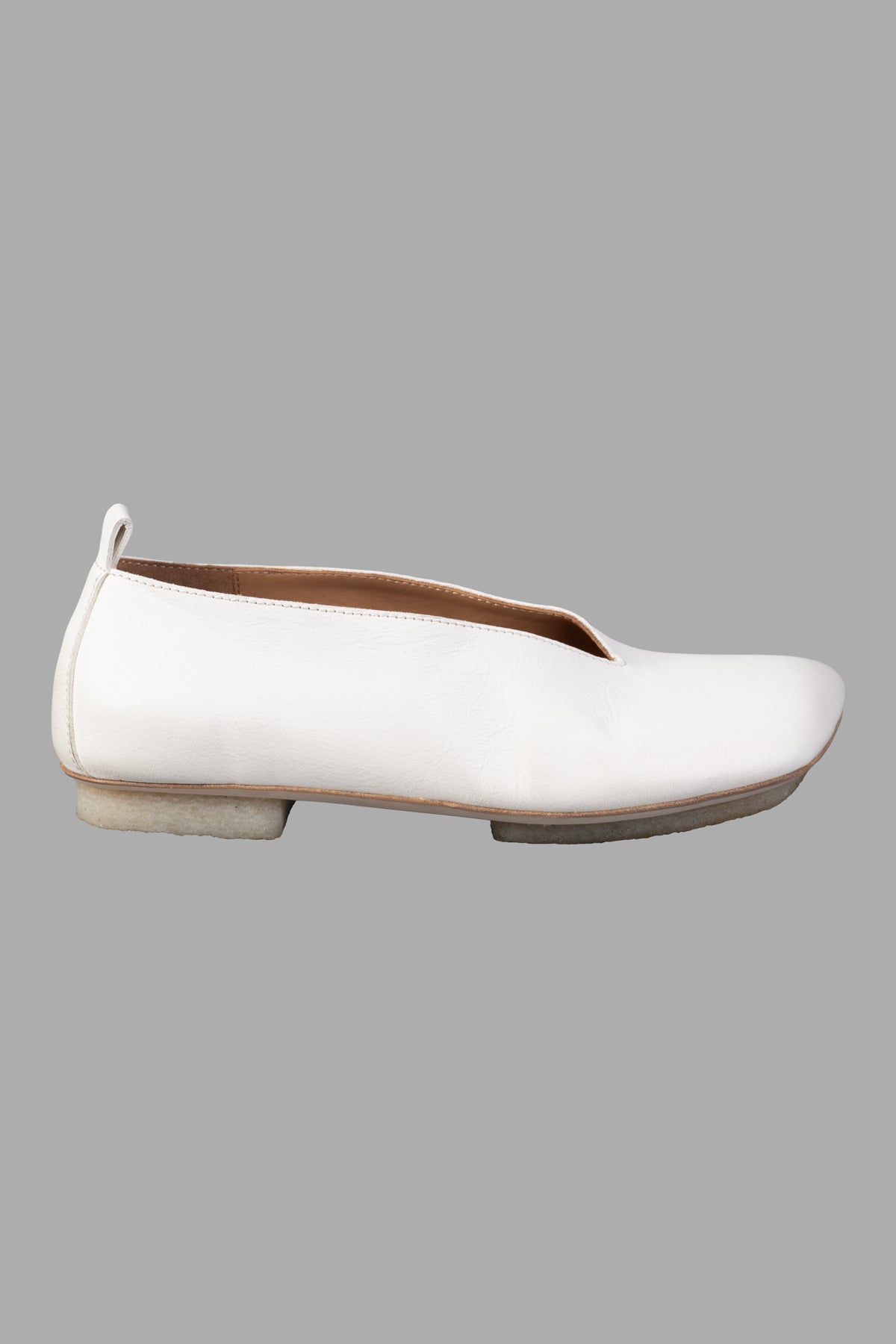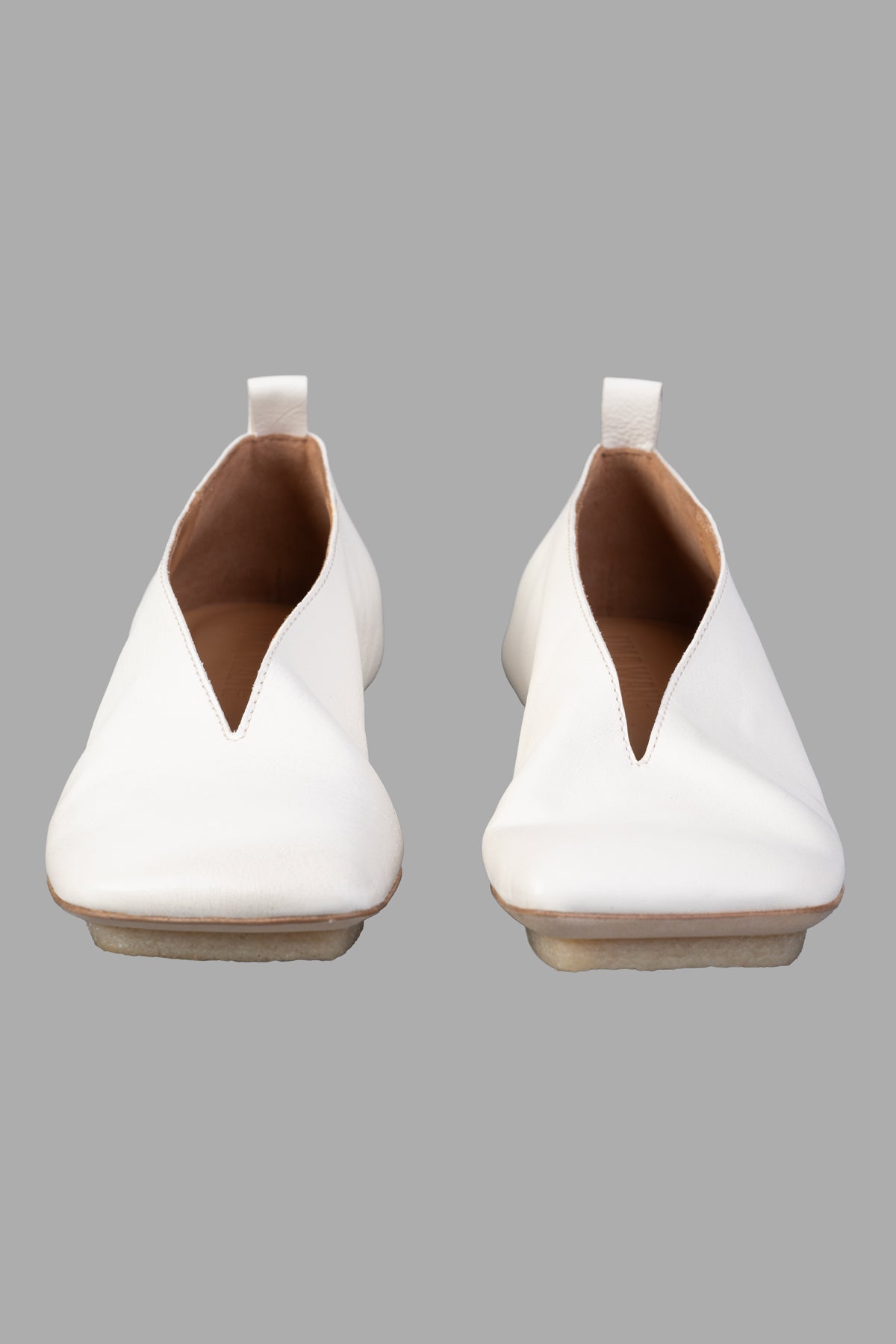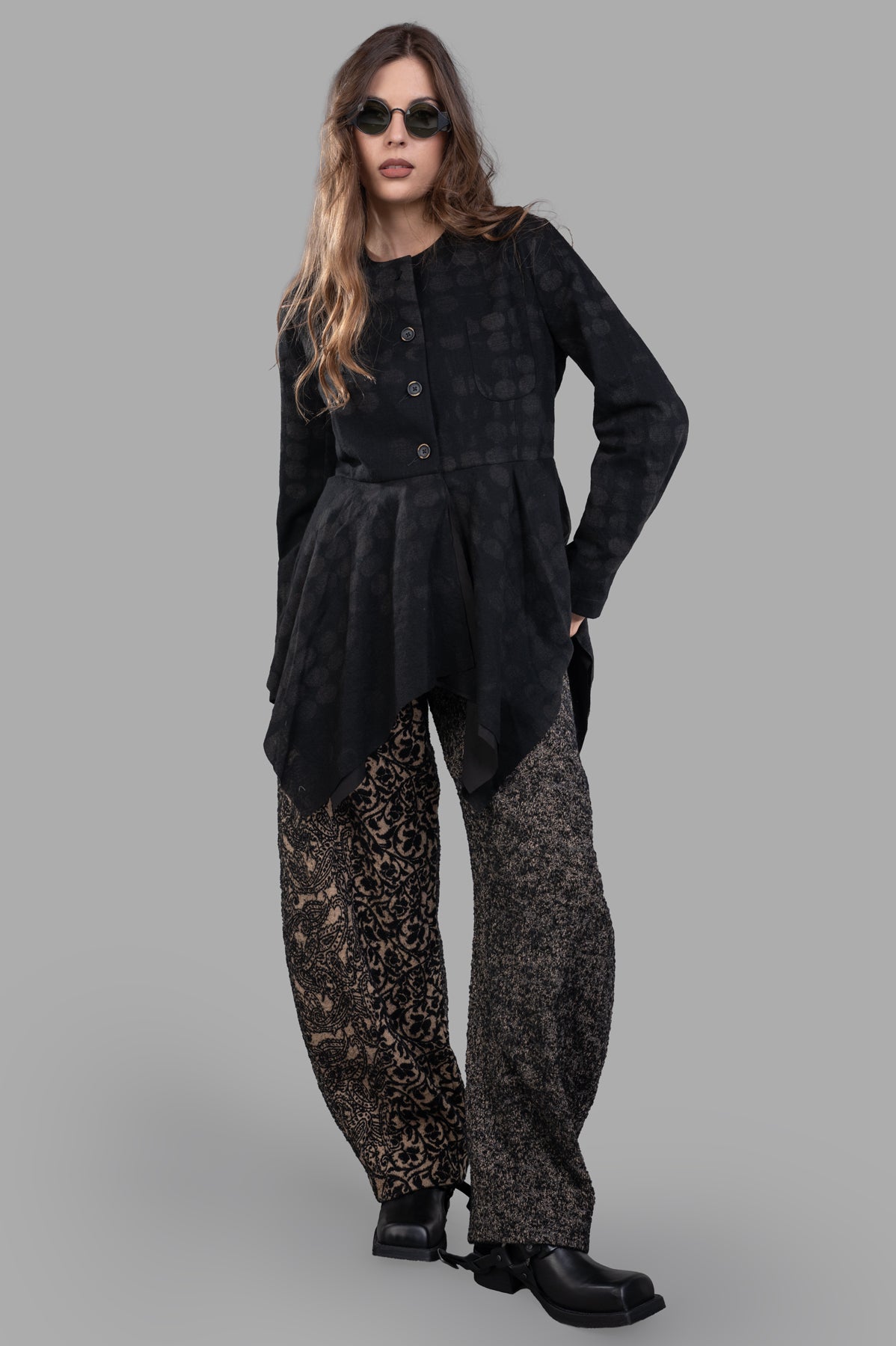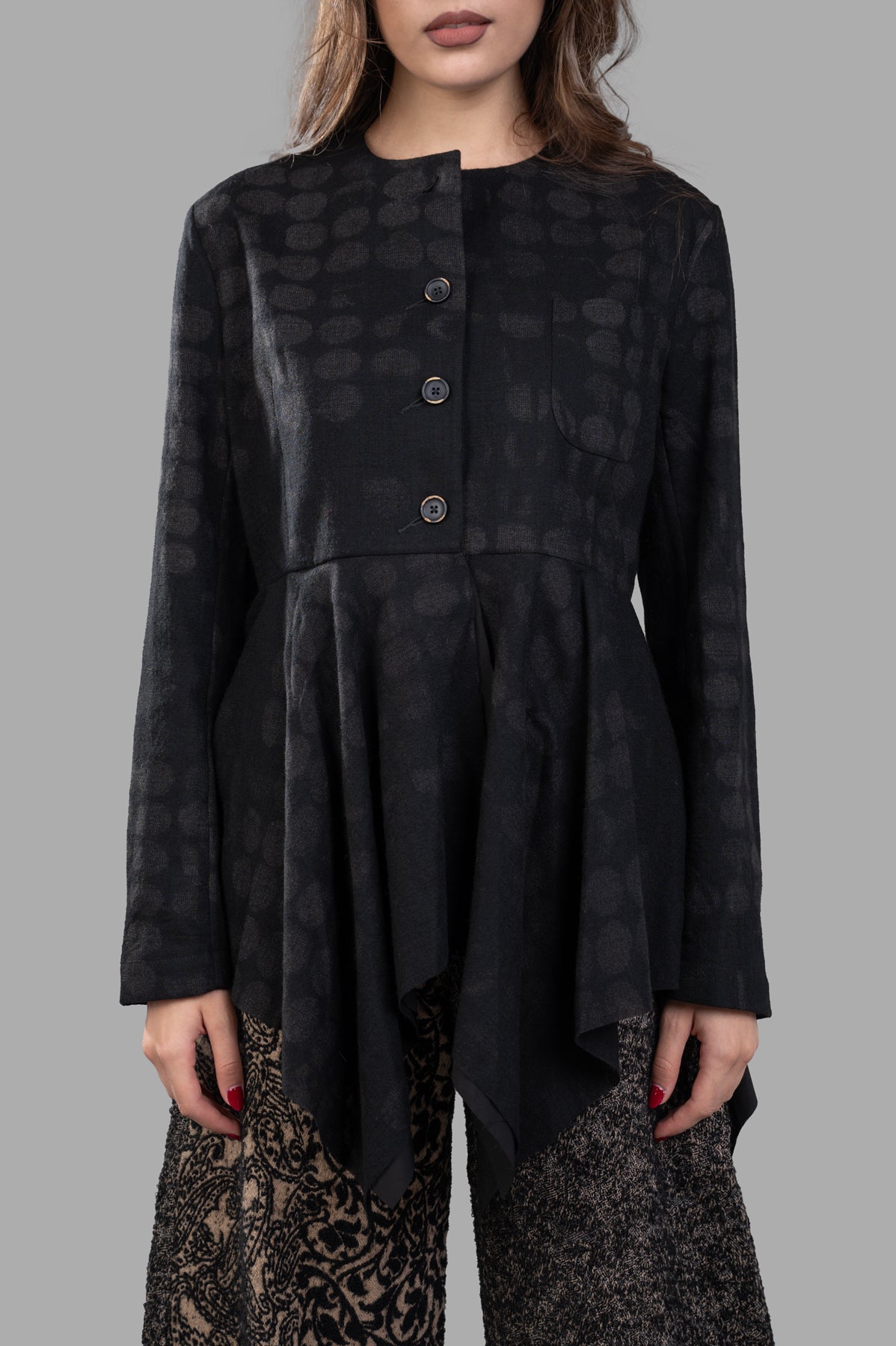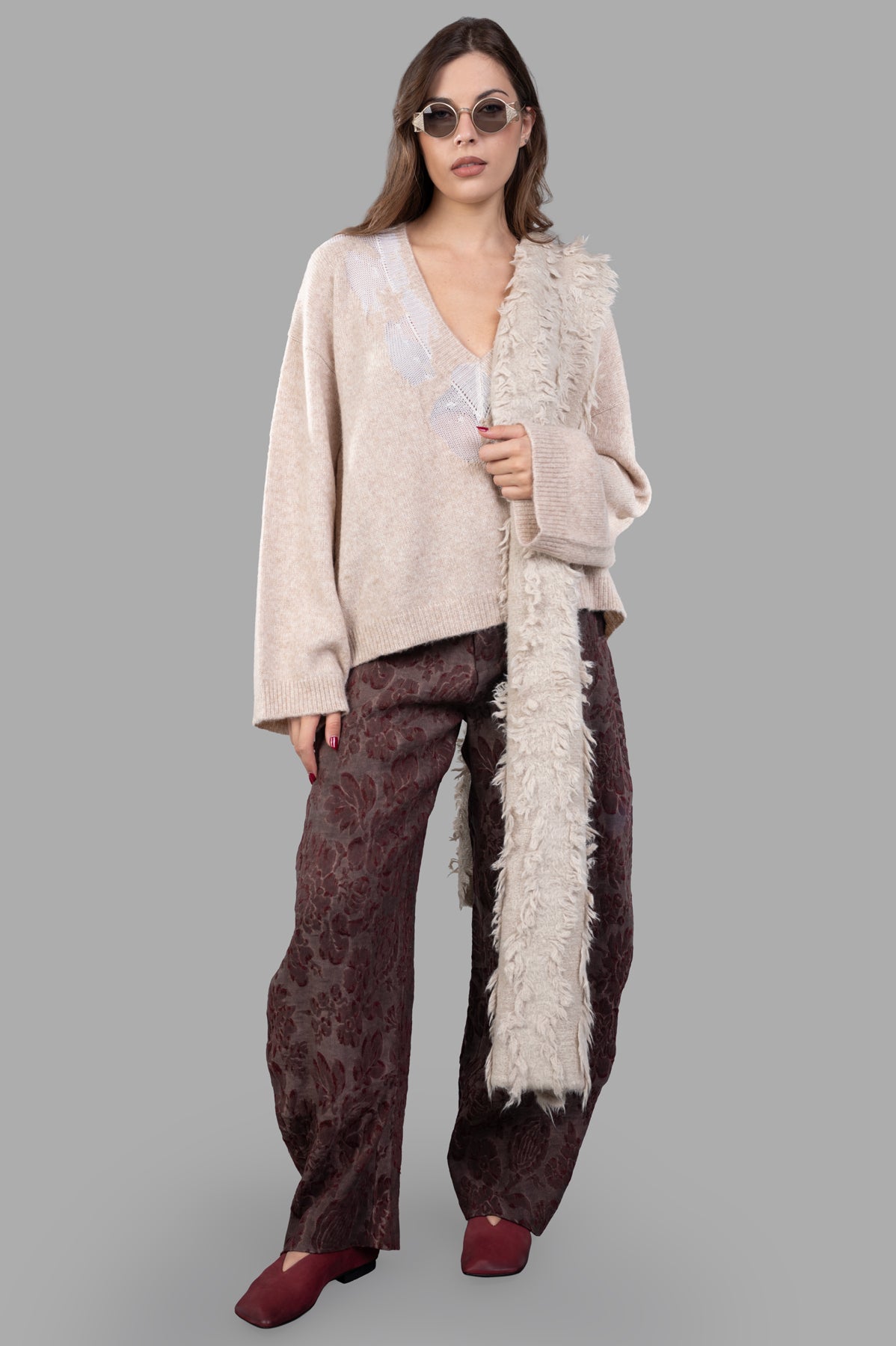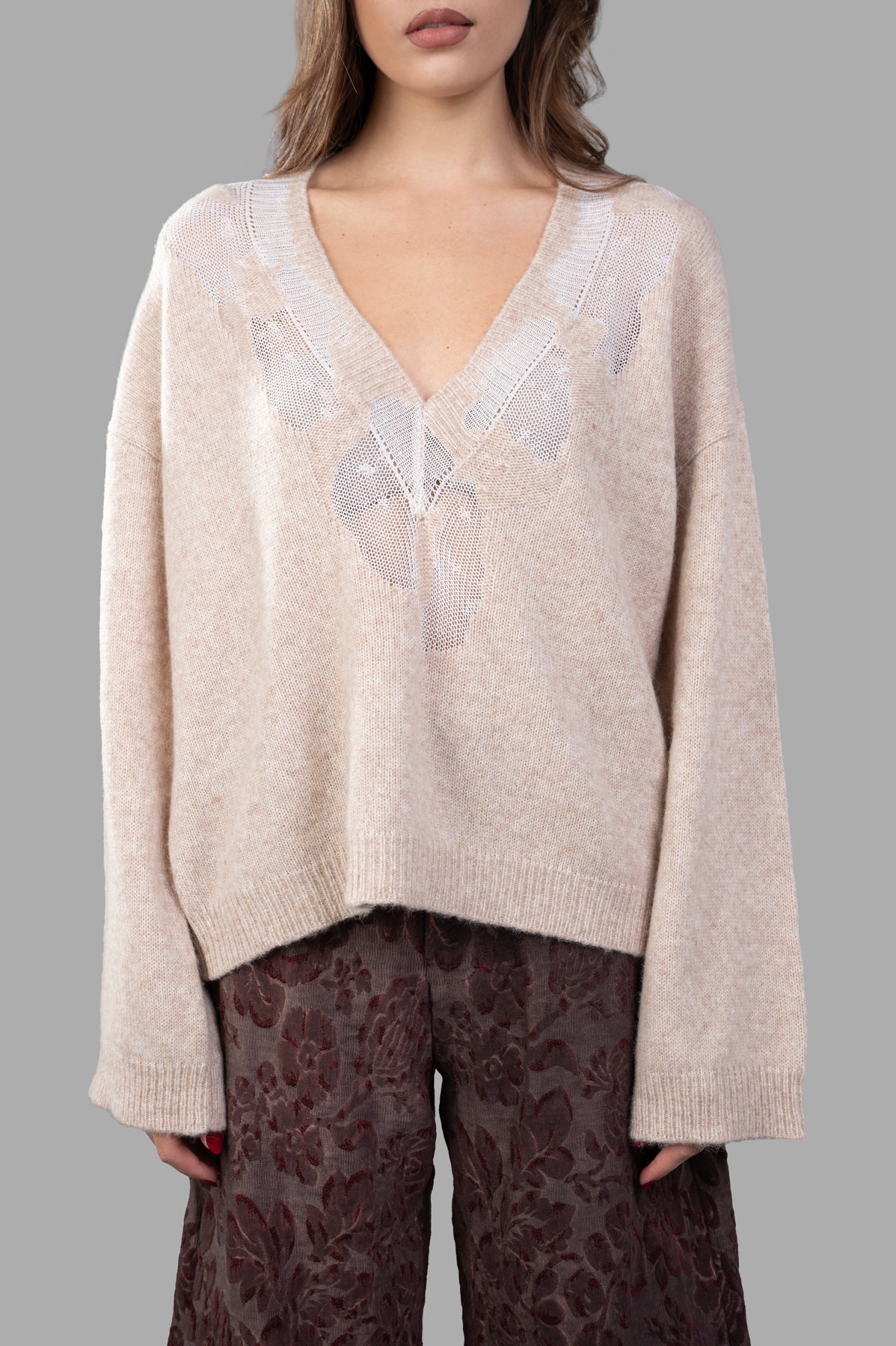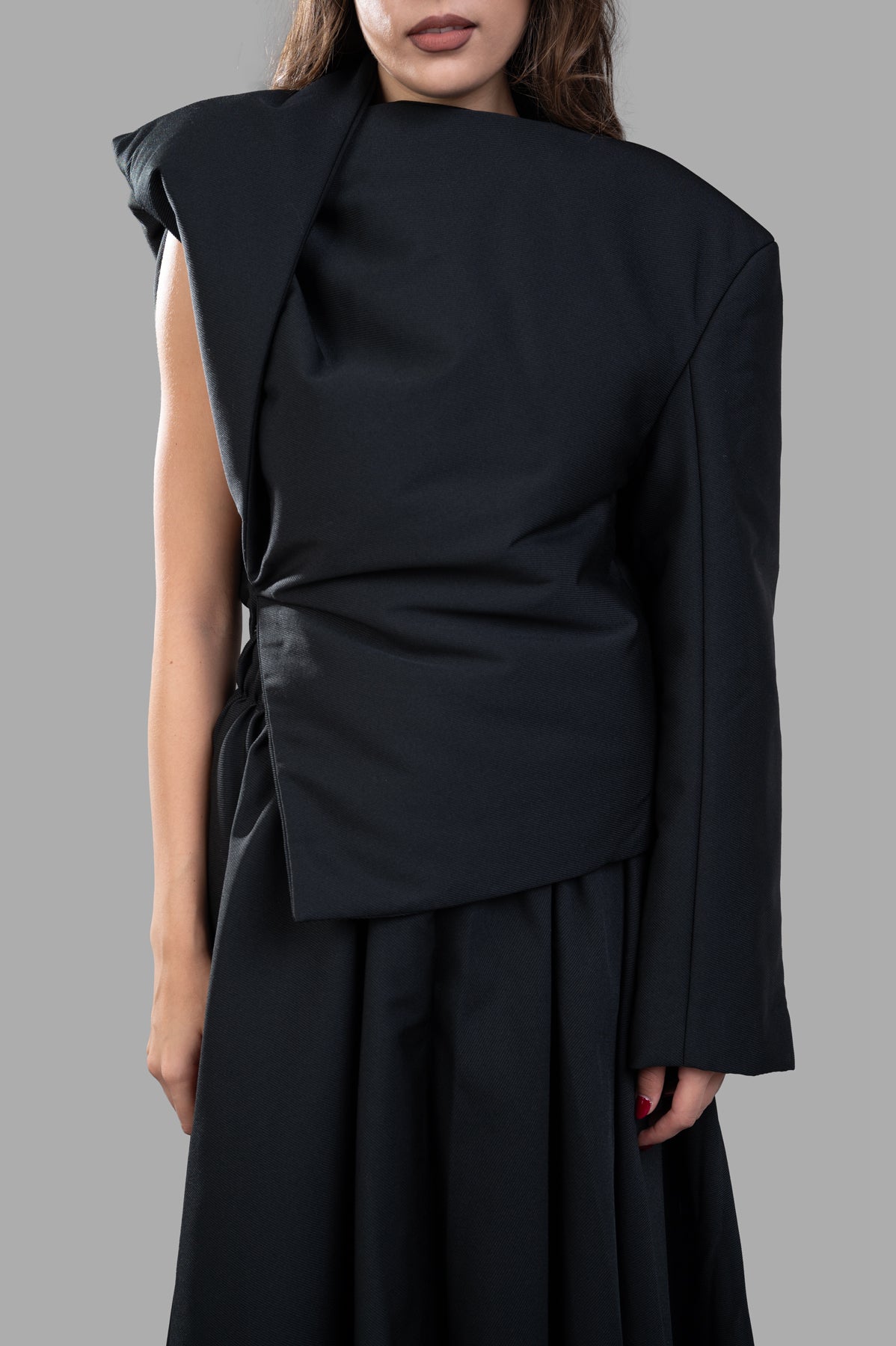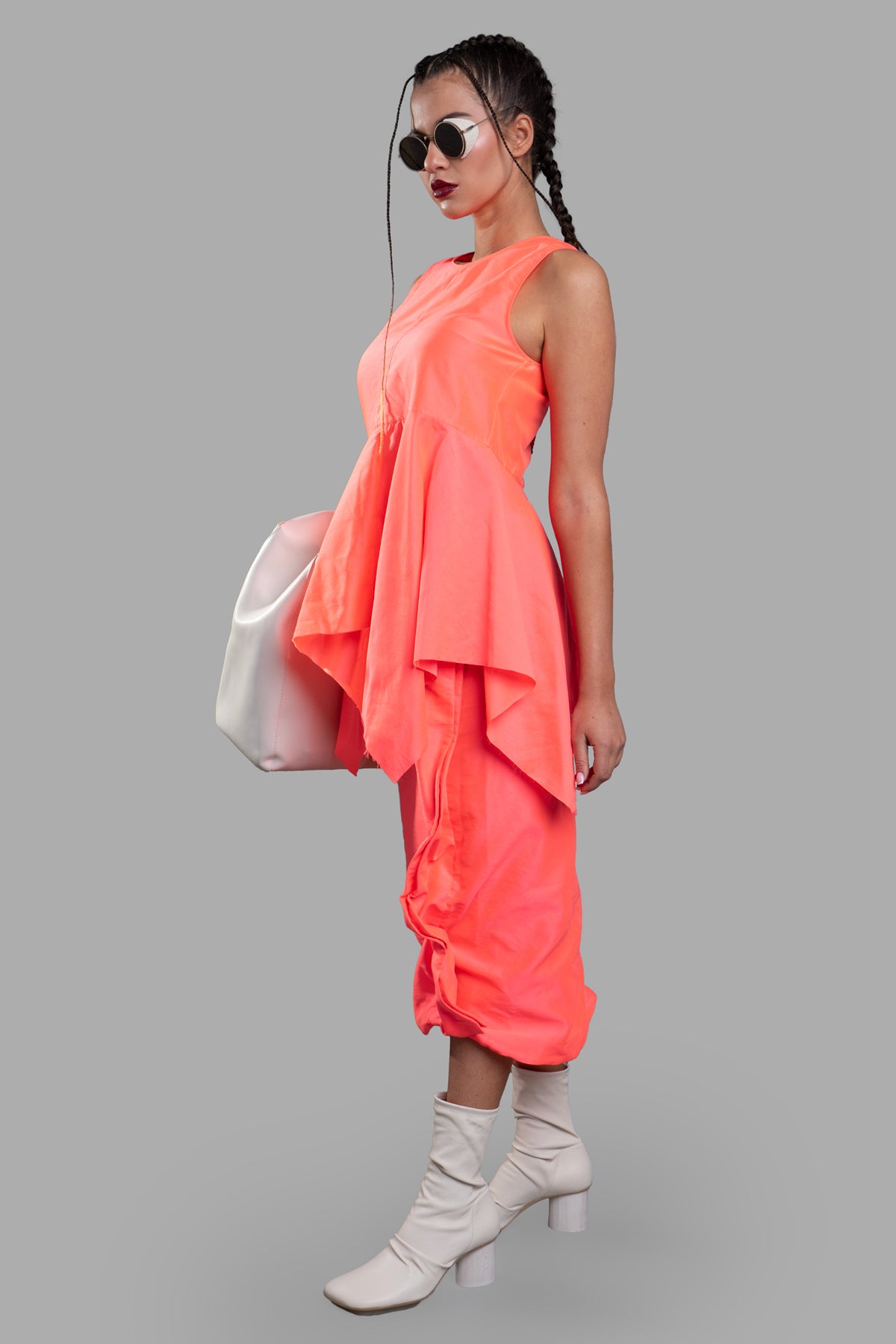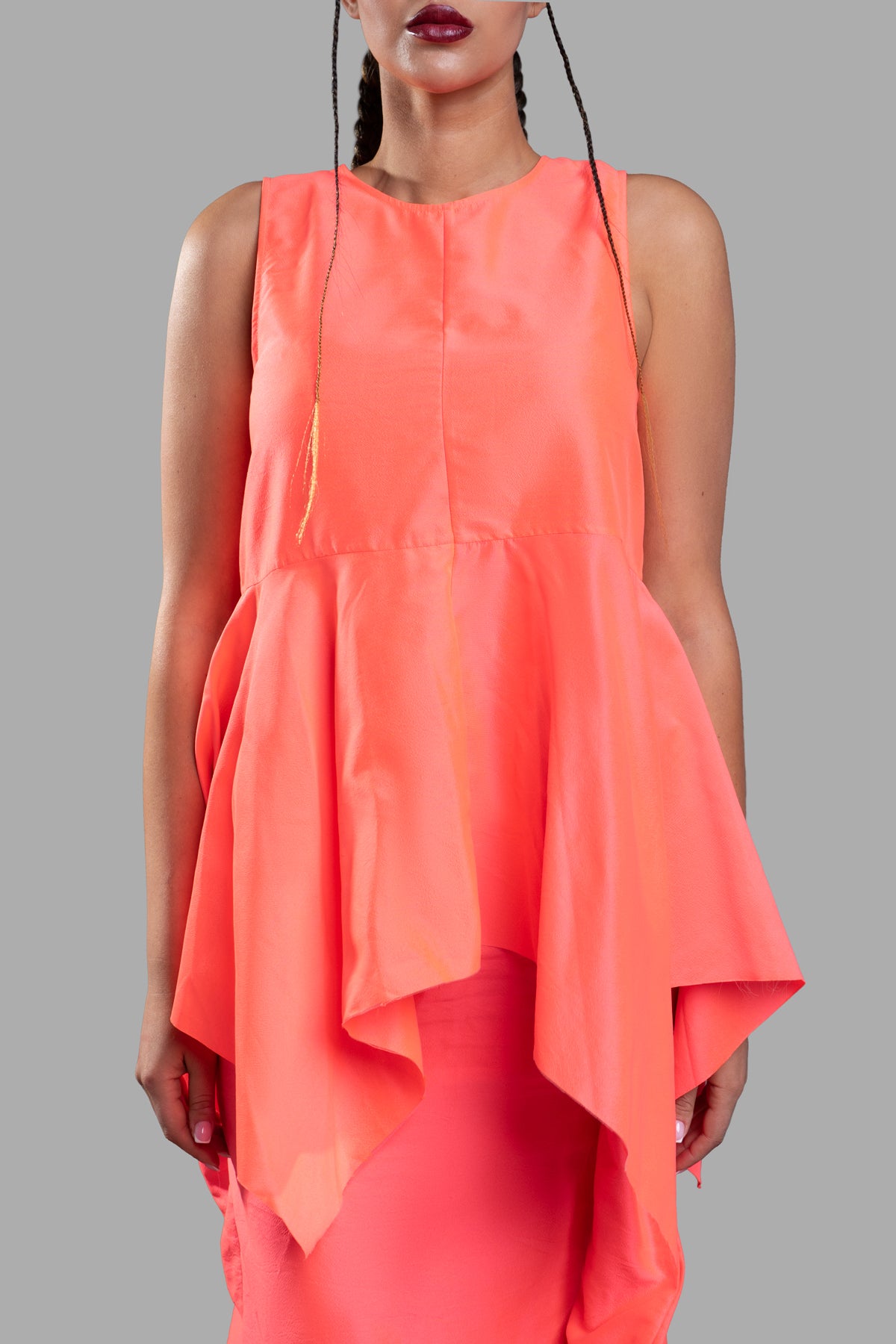Filters
Uma Wang: Sculptural Ease in Italian Textiles
The Look Today
Uma Wang’s clothes read as quiet architecture: softened shoulders, long lines, and fabrics that feel worked by hand. Expect column dresses that move rather than cling, cocoon coats with calm volume, and tailoring that curves instead of cuts. The palette stays grounded in earth tones, with weathered finishes that lend depth on the rack and patina on the body. Recent runways sharpened that language—sculptural drape, tea‑tinted surfaces, and hand‑touched texture that rewards a closer look.
Silhouette & Construction
Wang builds silhouette through proportion shifts, not stiffness. Coats often carry eased or rounded shoulders balanced by a drawn‑in waist or an A‑line sweep. Trousers favor a fuller leg with a soft taper; skirts and dresses extend the vertical line in bias or column cuts. You’ll notice strategic asymmetry—twisted seams, offset closures, curved darts—that shape without hard edges. Volume is disciplined: ample parkas over wide pants, yes, but the relationships are measured so the outfit reads intentional rather than oversized.
Patternwork you feel
Panels are spliced to redirect fall and weight; linings and facings sometimes surface as design. Waist seams sit a touch high to lengthen the leg; back vents open into movement rather than flare. The result is clothes that skim, turn, and settle back into place.
Materials & Finish
Textile is the message. Wang works natural fibers—linen, silk, cotton, wool, cashmere—alongside jacquard and damask woven for dimensional surface. Many fabrics are over‑dyed, tea‑stained, waxed, or washed to soften the hand and mute shine. Inside‑out treatments and intentionally raised floats create a slight fuzz at seams or hems; you get depth without heavy prints. On skin, linens feel cool and granular; cashmere and double‑face blends sit plush without bulk; garment‑dyed silks carry a matte glow under evening light.
Seasonality
Linen and cotton pieces anchor warm‑weather dressing; wool and cashmere coats carry through deep winter. Much of the line layers across seasons: a sleeveless column under a boiled‑wool cardigan; a gauze shirt under a damask coat. Color follows the fabric—bone, clay, peat, coal—so mixing seasons looks cohesive.
Signatures & Canonical Pieces
-
Cocoon and column coats in damask or double‑face wool with curved seams and minimal hardware.
-
Draped maxi and slip dresses that keep the line long while freeing the torso.
-
Soft tailoring with generous ease and sculpted lapels.
-
Textured knit layers that sit cleanly under outerwear.
-
Footwear with characterfully shaped toes—square or softly rounded—and stacked or block heels; recurring “Stone” boots and square‑toe ballet pumps appear in collections.
-
Eyewear collaborations (notably with Rigards) that echo the brand’s sculptural language.
How to Wear It Now
Weekday, desk to dinner. Pair a tea‑tinted jacquard jacket with full‑leg trousers and a matte silk shell. Keep accessories tonal; let surface do the talking.
Evening. A black column dress with an inside‑out jacquard peplum or draped back. Add square‑toe pumps and a single metal cuff.
Weekend. Linen parka over a long knit and easy pants; low, round‑toe boots. Colors sit in the same earth family to blend textures.
Travel/Trans‑season. Sleeveless dress under a boiled‑wool cardigan, topped with a damask coat. Swap sneakers for soft pumps at arrival.
Fit & Sizing Notes
-
Dresses, shirts, outerwear: generally cut with relaxed ease. Many shoppers size down for a neater line while retaining the intended drape.
-
Trousers and fitted knits: closer to true‑to‑size; choose your usual size if you prefer a clean waist and hip.
-
Coats: expect room for layers; size down only if between sizes and wearing lightweight underpinnings.
-
Shoes: Italian‑made lasts with standard width; most take their usual EU size. For closed‑toe boots worn with thick socks, consider a half‑size up if available.
Always check garment measurements and the fabric’s give; treatments like waxing or heavy washes reduce stretch.
Care & Longevity
Treat the textile first. Structured coats, tailored jackets, and garment‑dyed dresses: dry clean to preserve finish and seam integrity. Robust cotton or wool knits: hand wash cold with a delicate detergent if the care label allows; dry flat to keep length. Avoid heavy steam on piece‑dyed and waxed surfaces; a cool iron on the reverse or a garment steamer held at distance is safer. Store knits folded; hang coats on wide, shaped hangers. For leather footwear, brush off dust, condition sparingly with neutral cream, and add a thin protective half‑sole at a cobbler to extend wear.
Heritage & Today
Designer Wang Zhi (Uma Wang) studied textiles at Shanghai’s former China Textile University (now Donghua University) before refining design at Central Saint Martins in London. She began presenting collections under her name in the mid‑2000s, developing the label’s focus on fabric and drape and formally establishing the brand in 2009. After early shows in Milan—including entry onto the Milan Fashion Week calendar—Wang shifted to Paris presentations from 2017, where her work’s material nuance sits comfortably in a craft‑minded context.
Recent collections underline that trajectory. Spring 2025 proposed Brancusi‑leaning sculpture with mirror‑kissed accessories and bare‑back dresses. Fall 2025 deepened the tactile story—double‑face cashmere, damasks, tea‑stained finishes, and deliberately frayed embroideries—while playing with volume through softly inflated skirts and curving pant legs. Production emphasizes Italian textile craft, with long‑running partnerships at mills known for jacquard and damask and atelier‑level finishing.
Responsibility, Stated Clearly
The brand communicates longevity over novelty: season‑agnostic pieces, natural‑fiber textiles, and finishes intended to age gracefully. Fabrics are predominantly developed and produced with Italian partners; many ready‑to‑wear pieces are made in Italy. Formal third‑party certifications are not widely advertised, so evaluate individual garment materials and care labels. The most responsible choice here is wearing the clothes often and for years—exactly how they’re designed.

